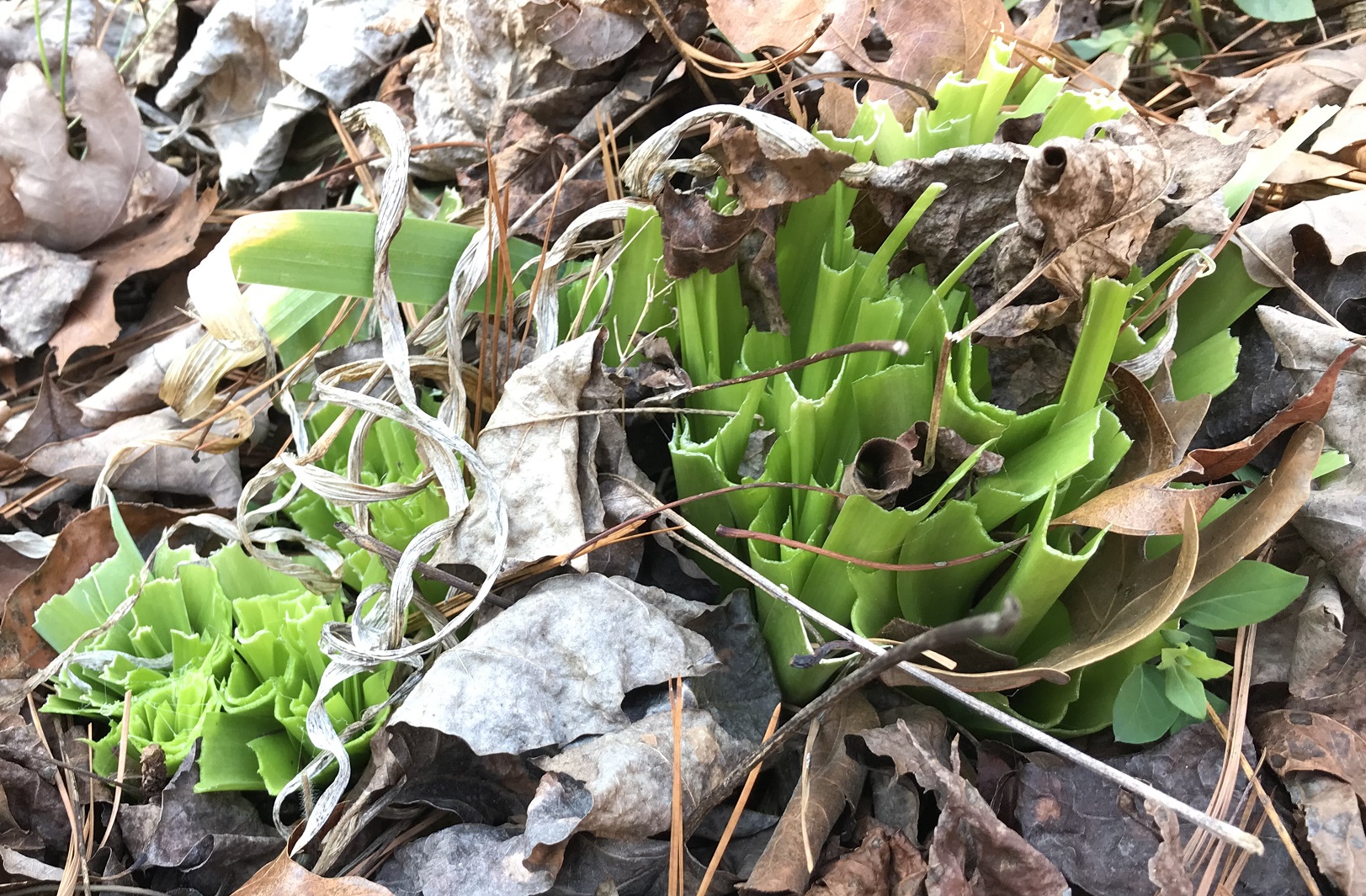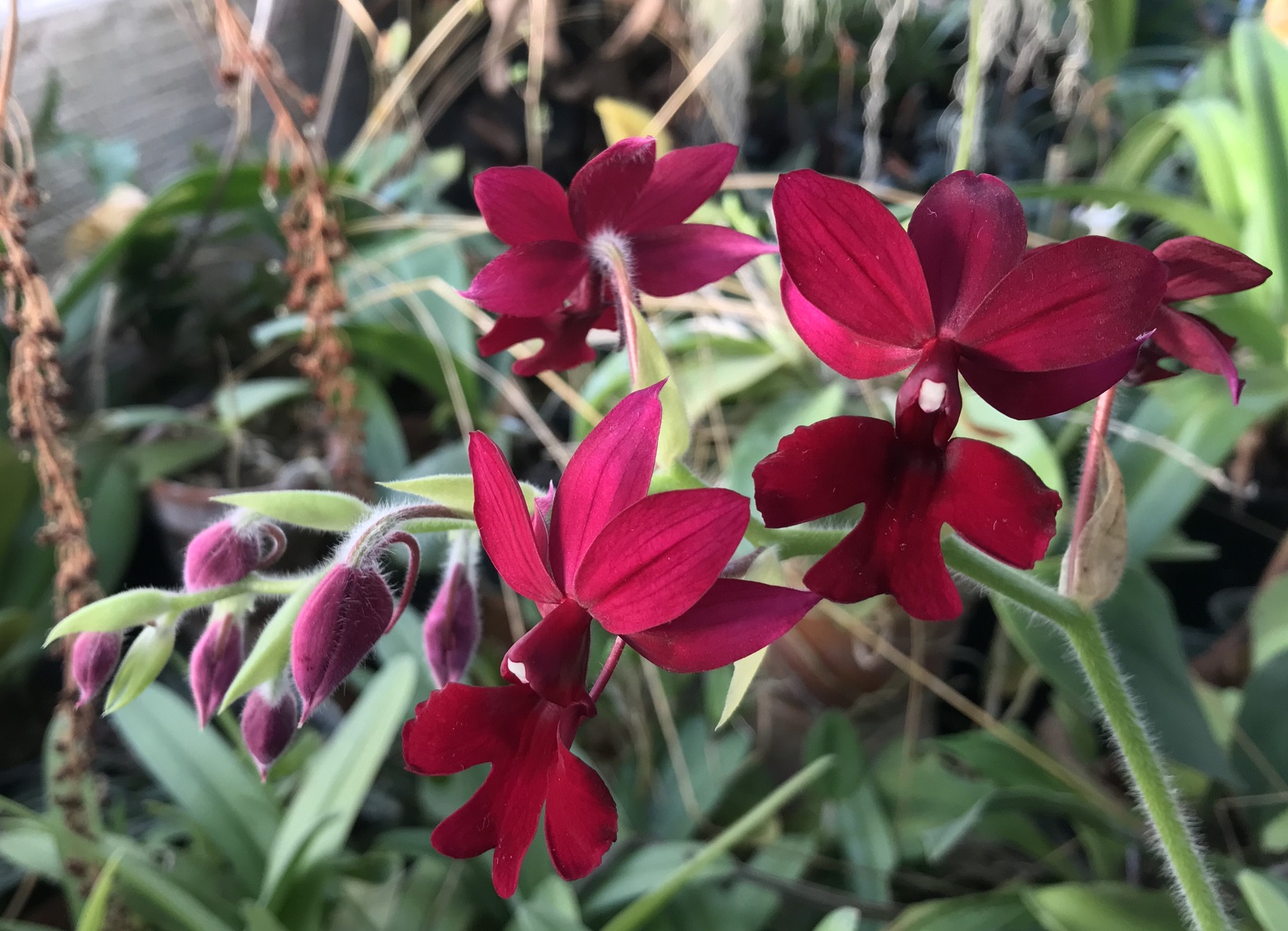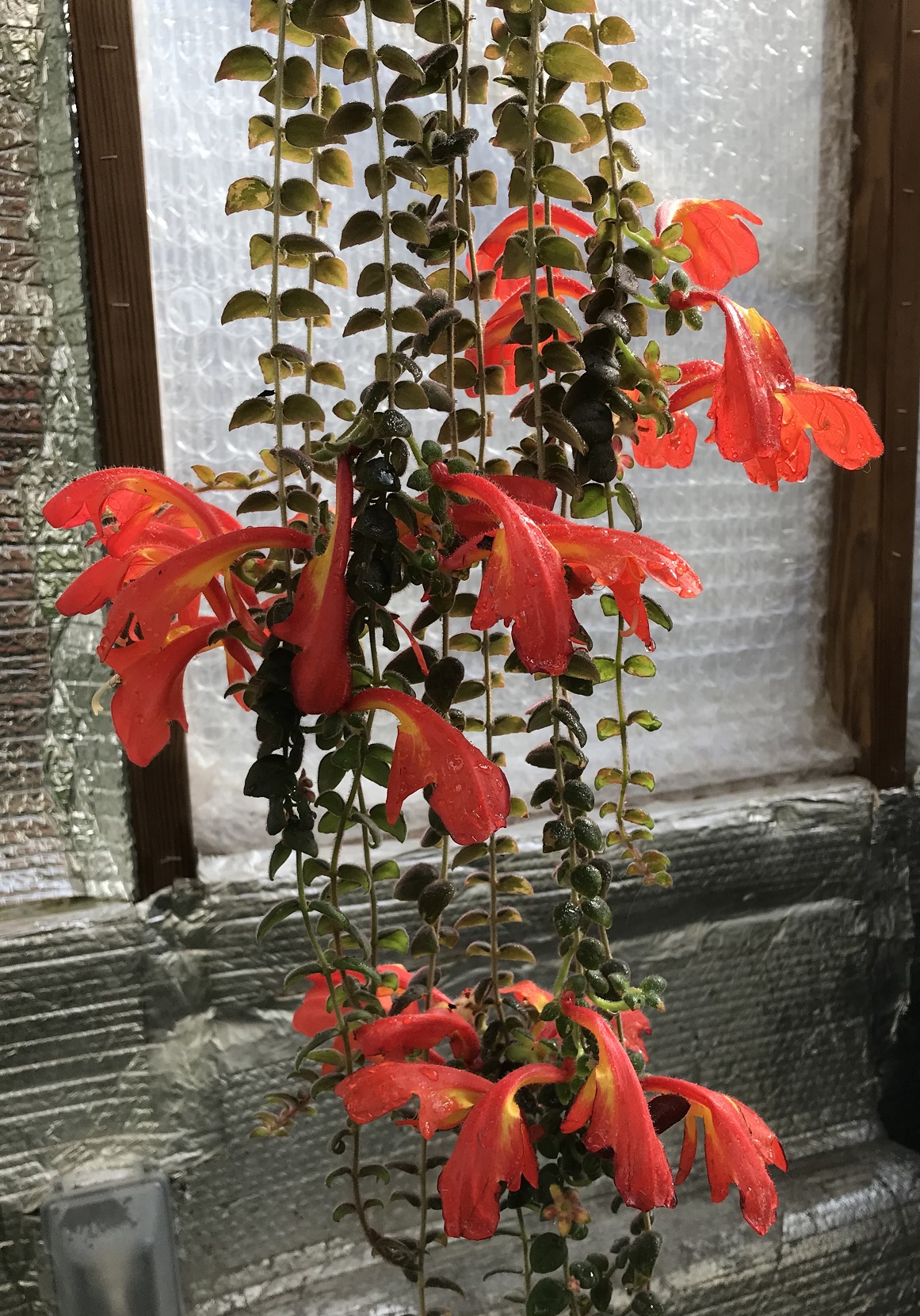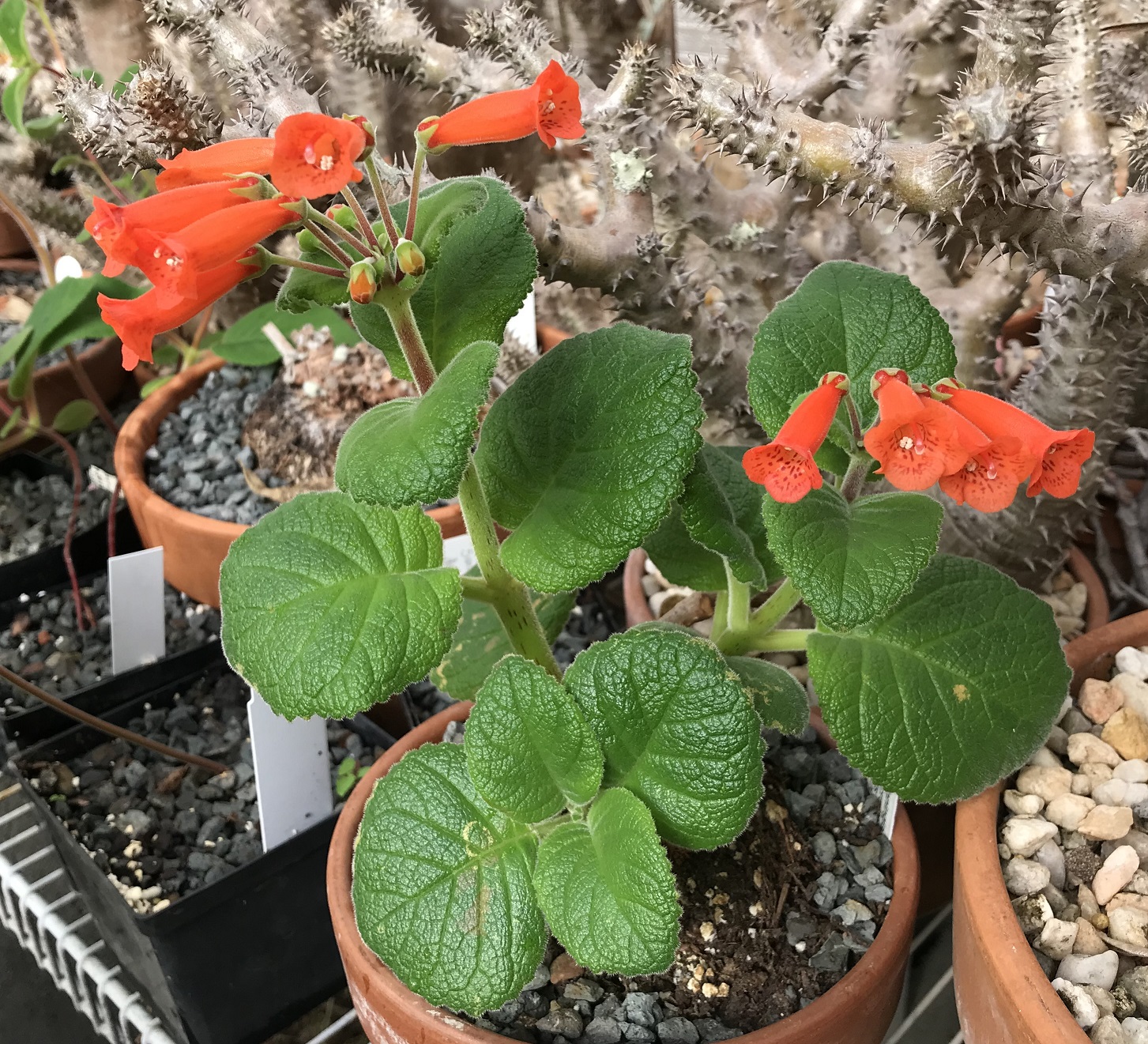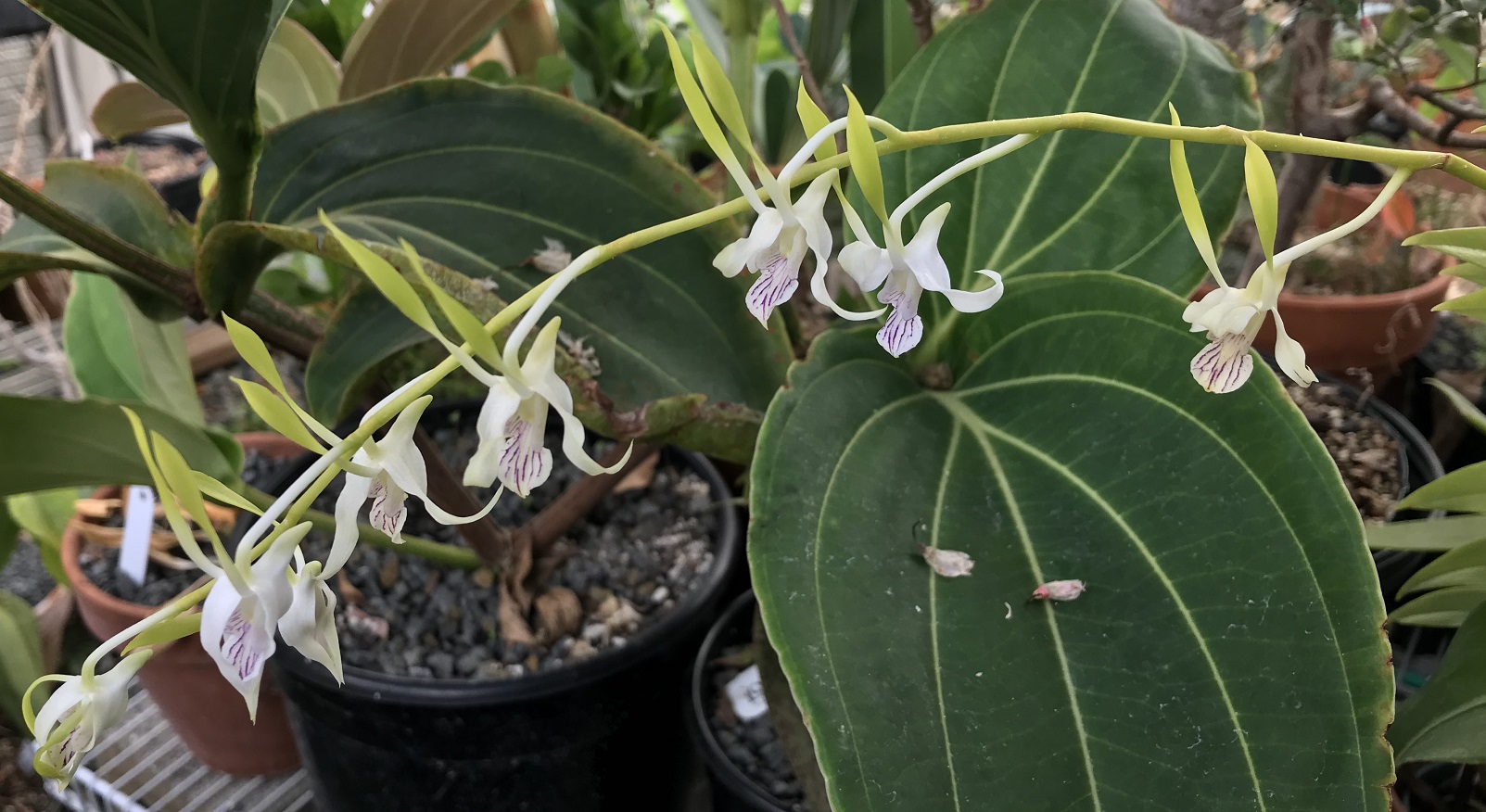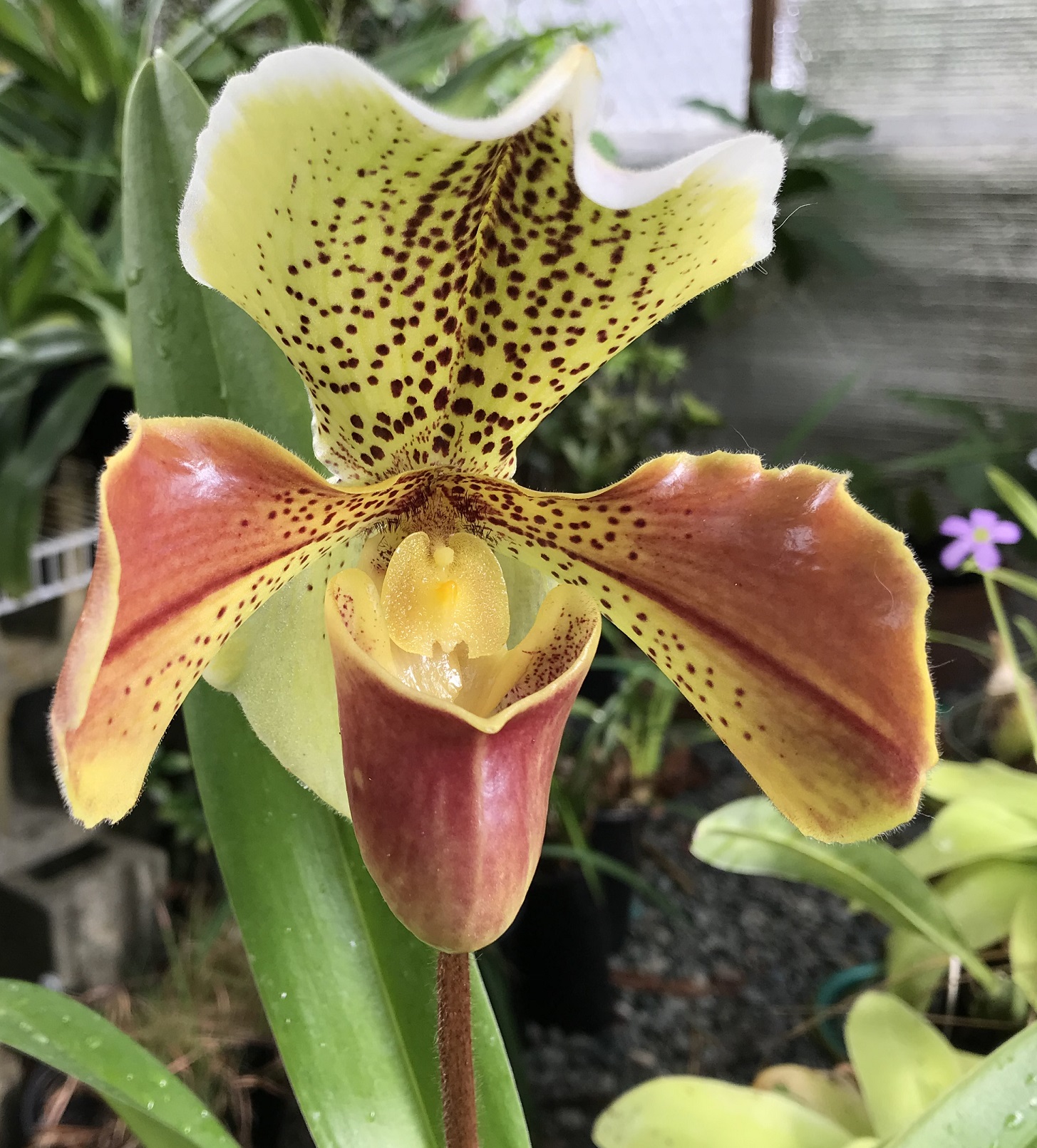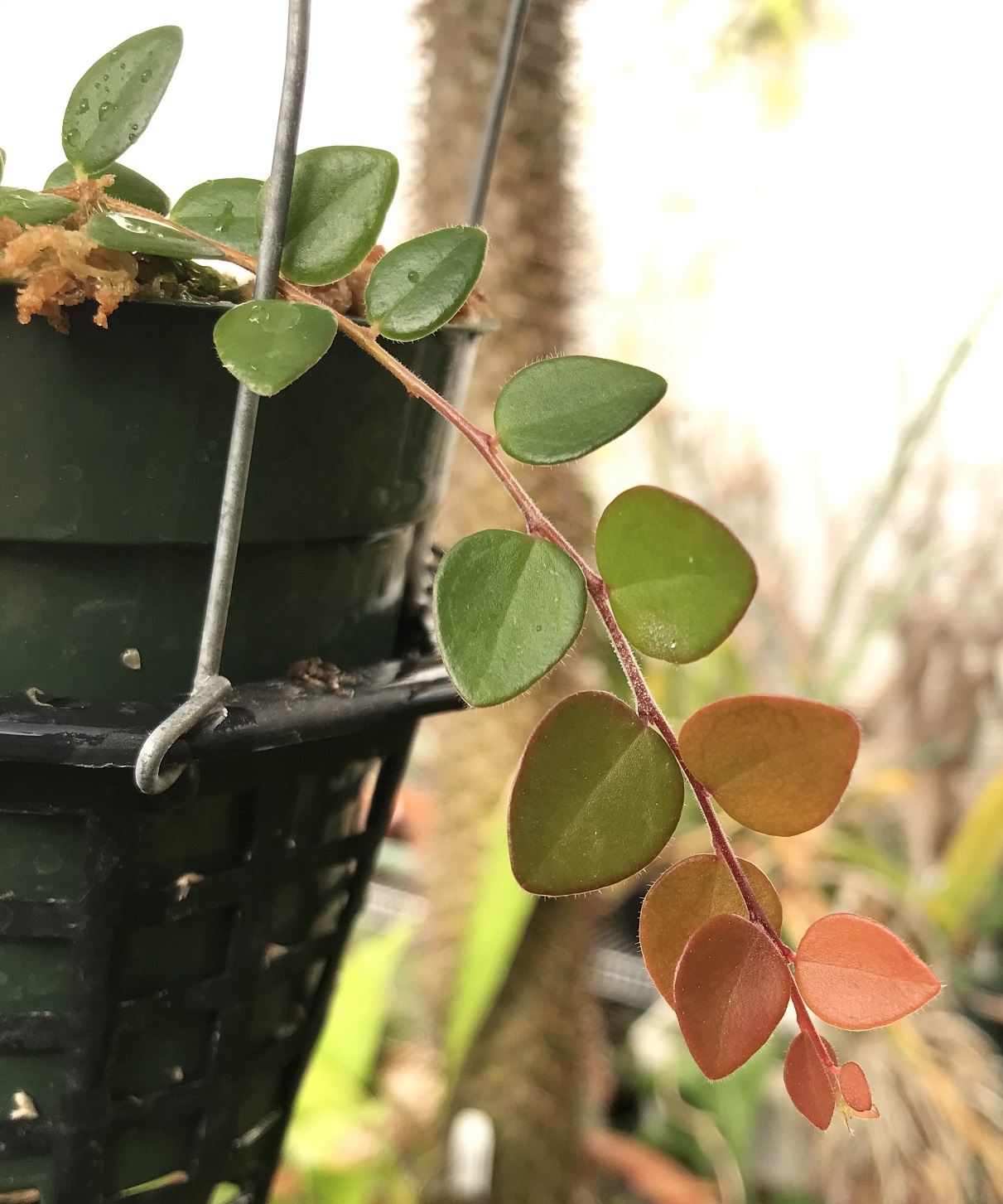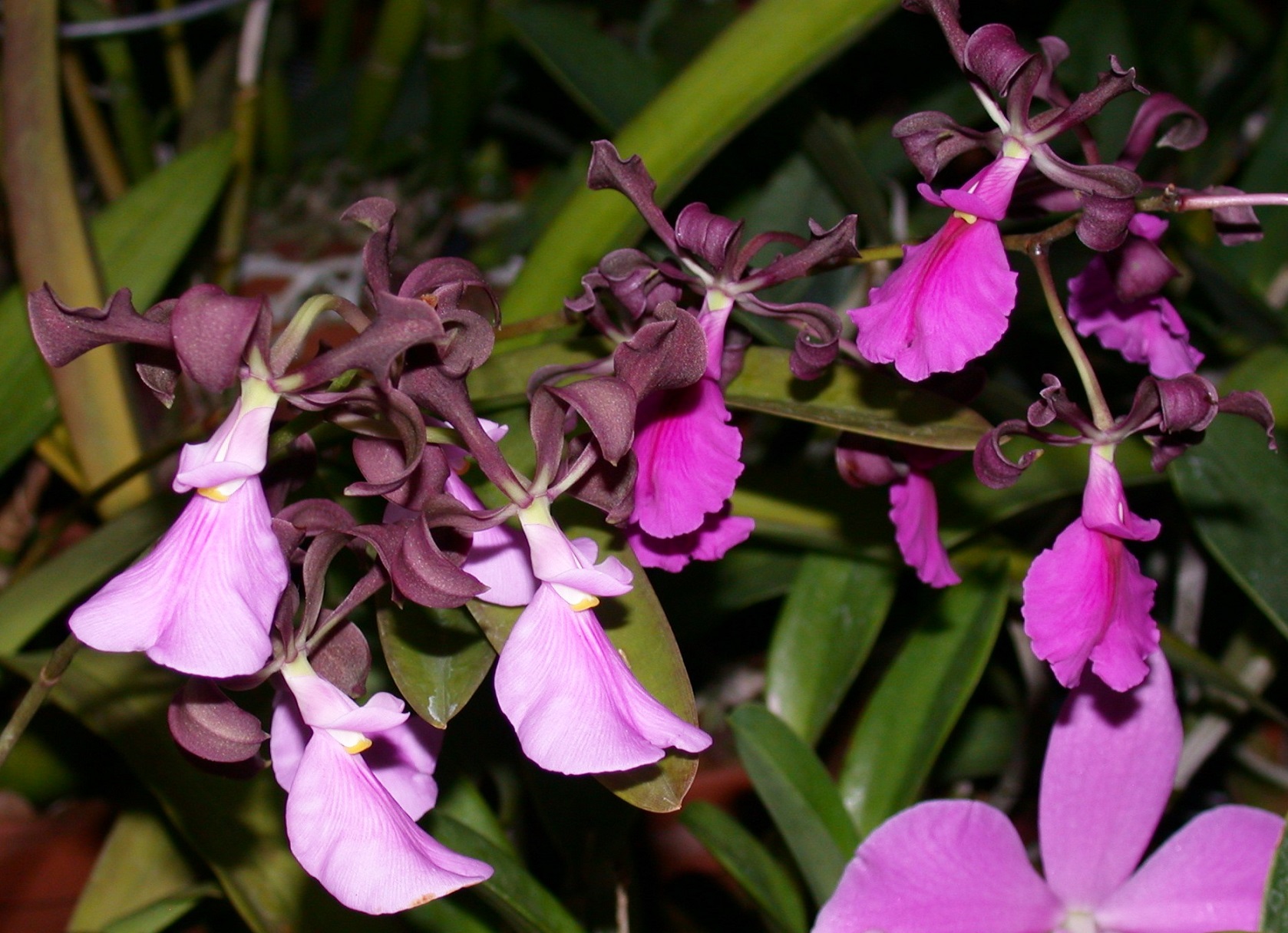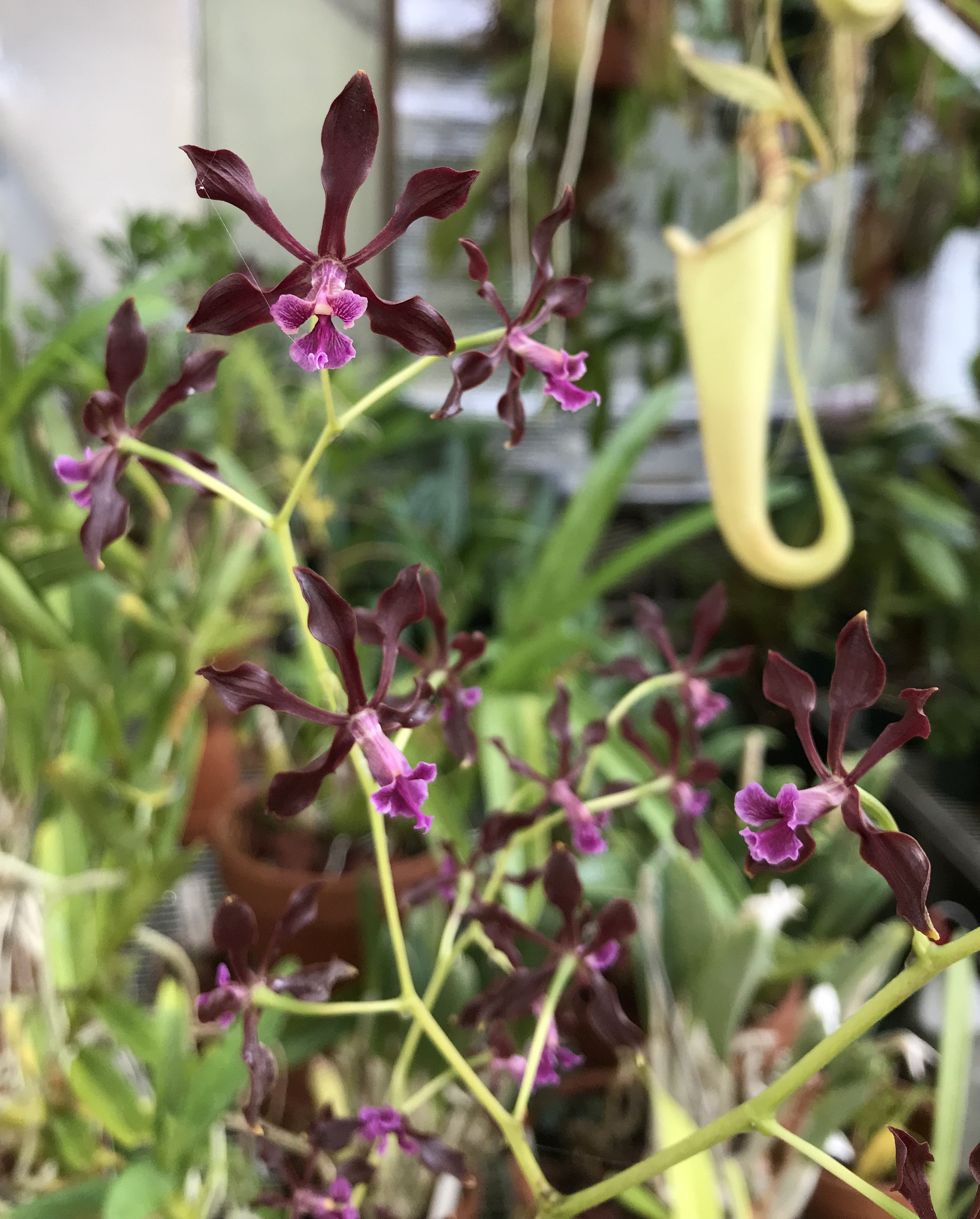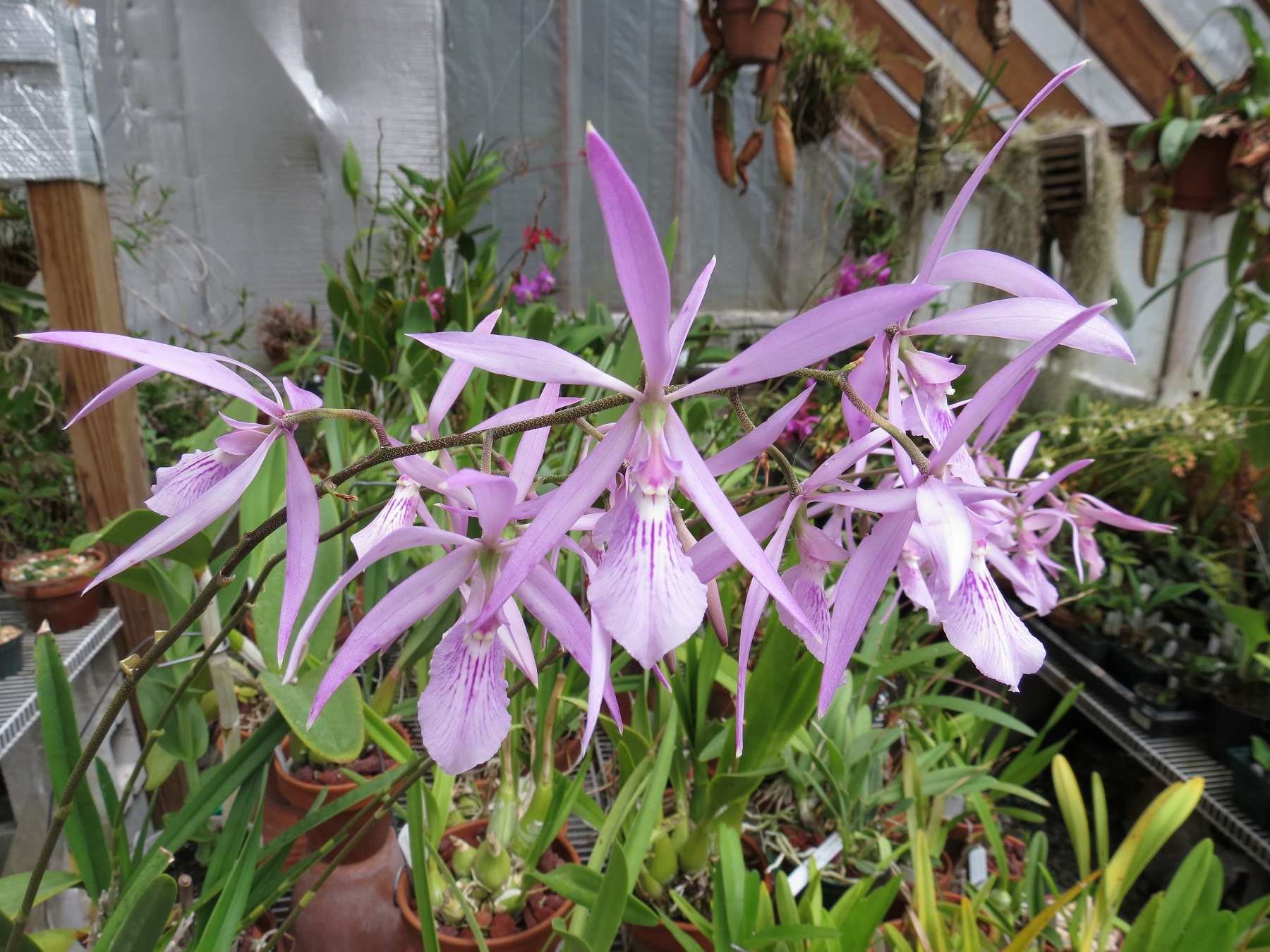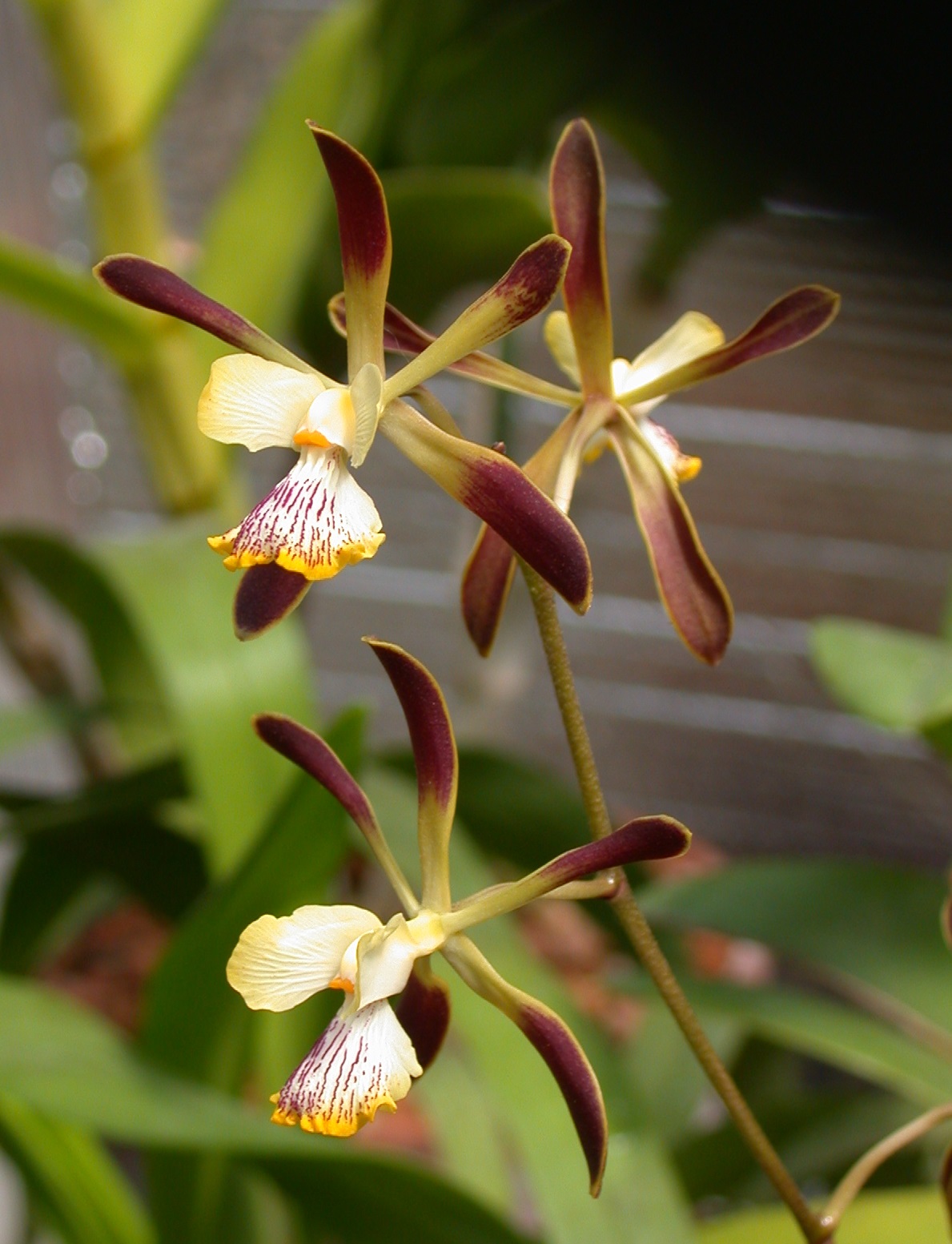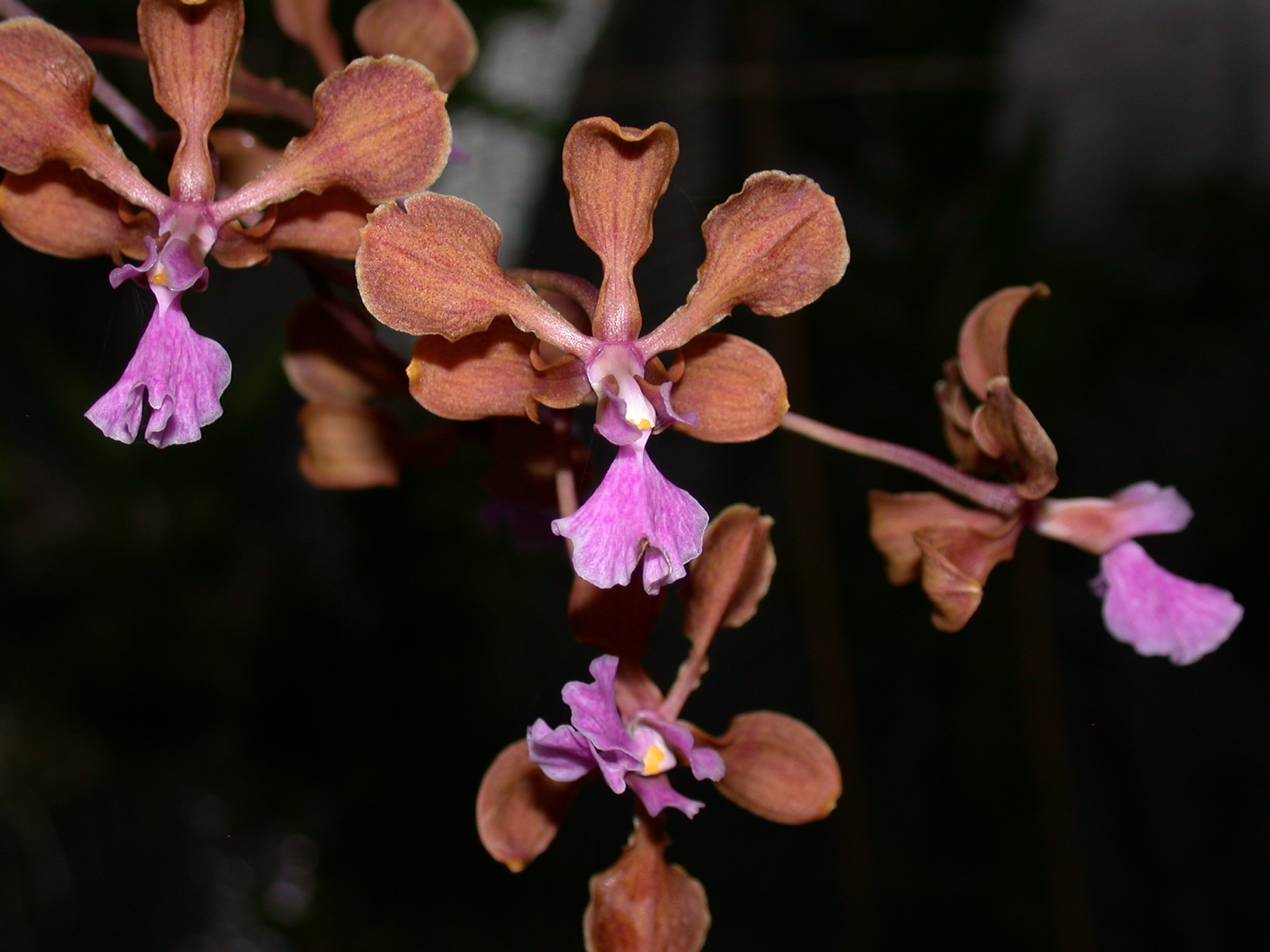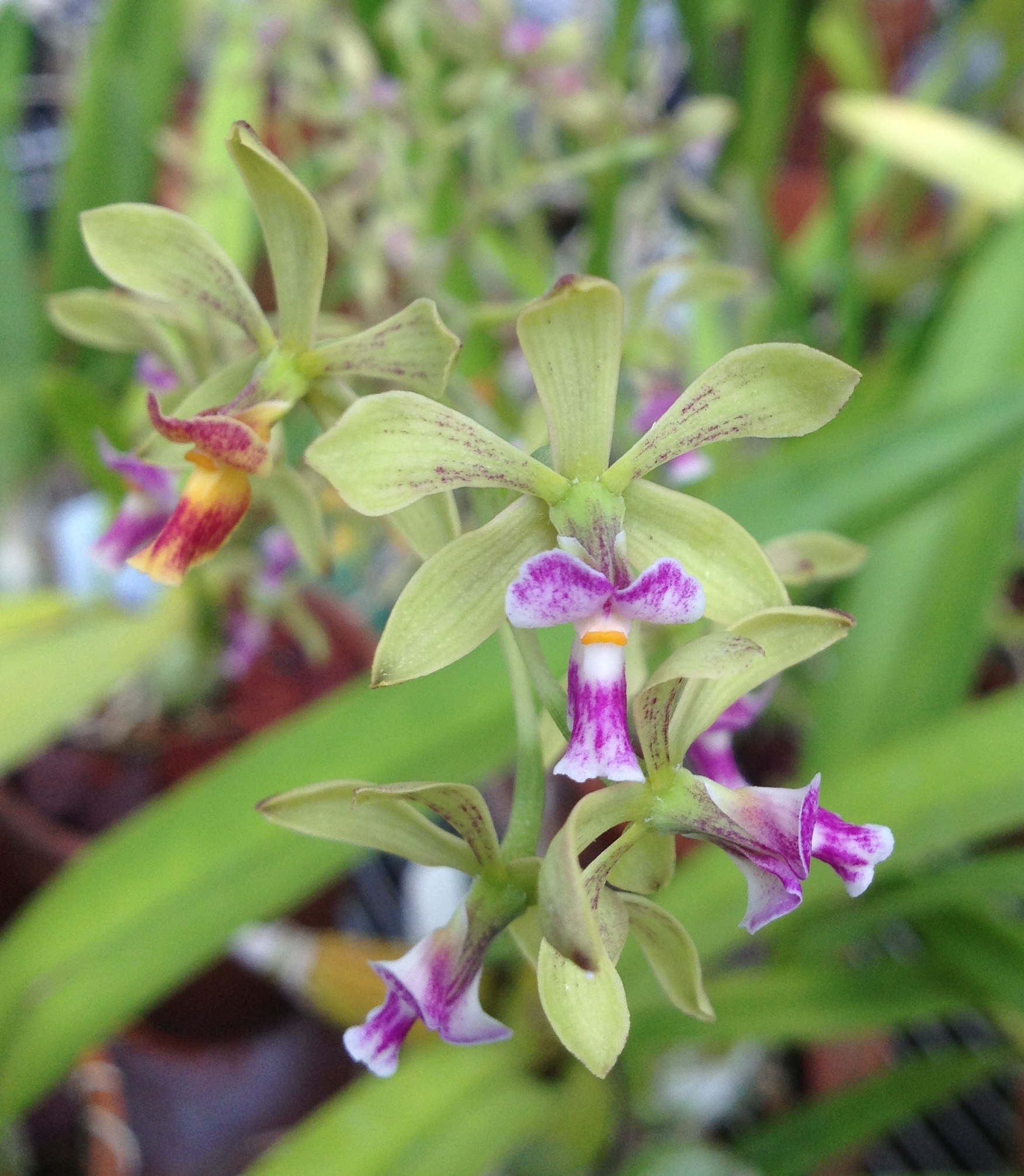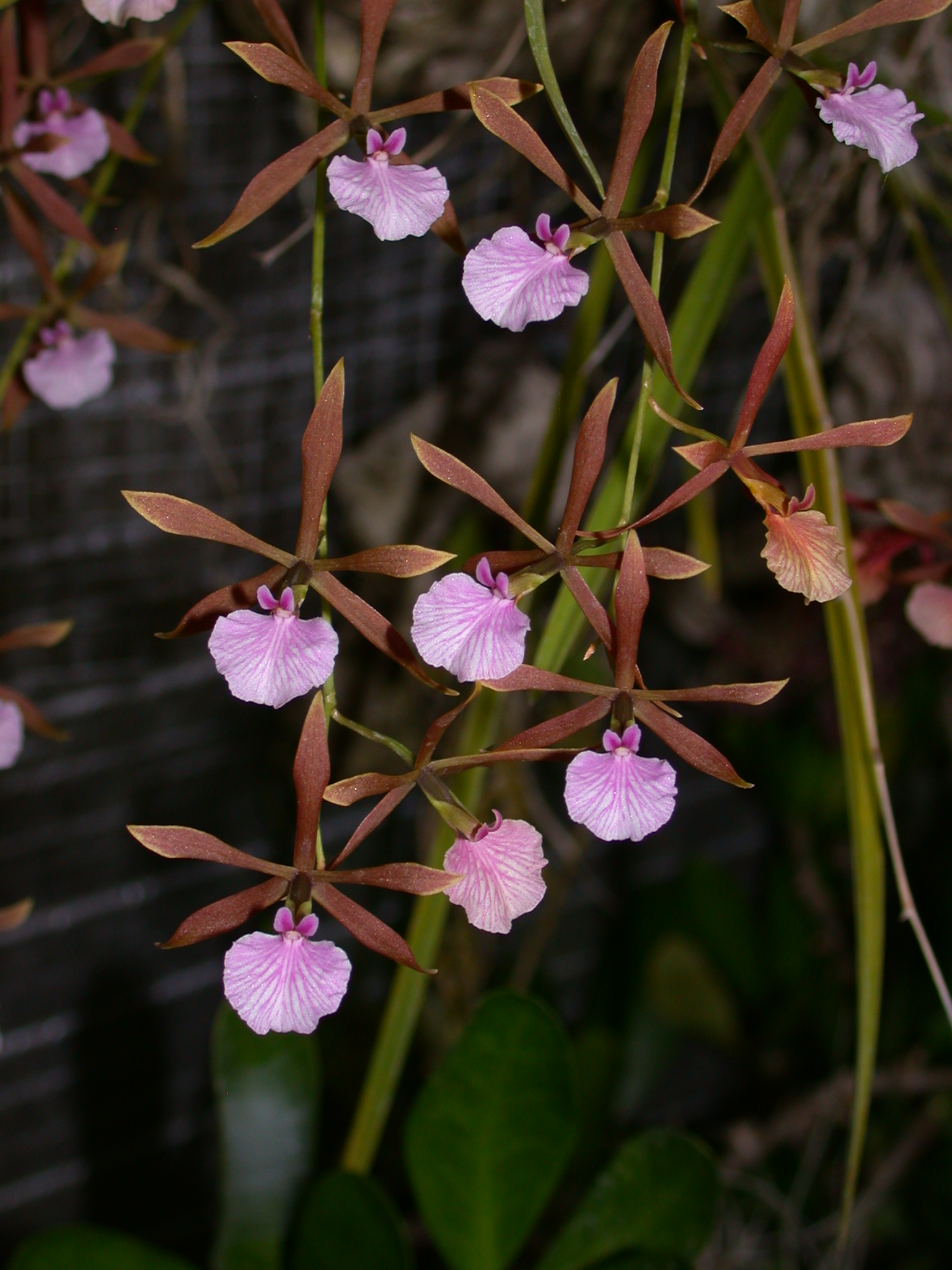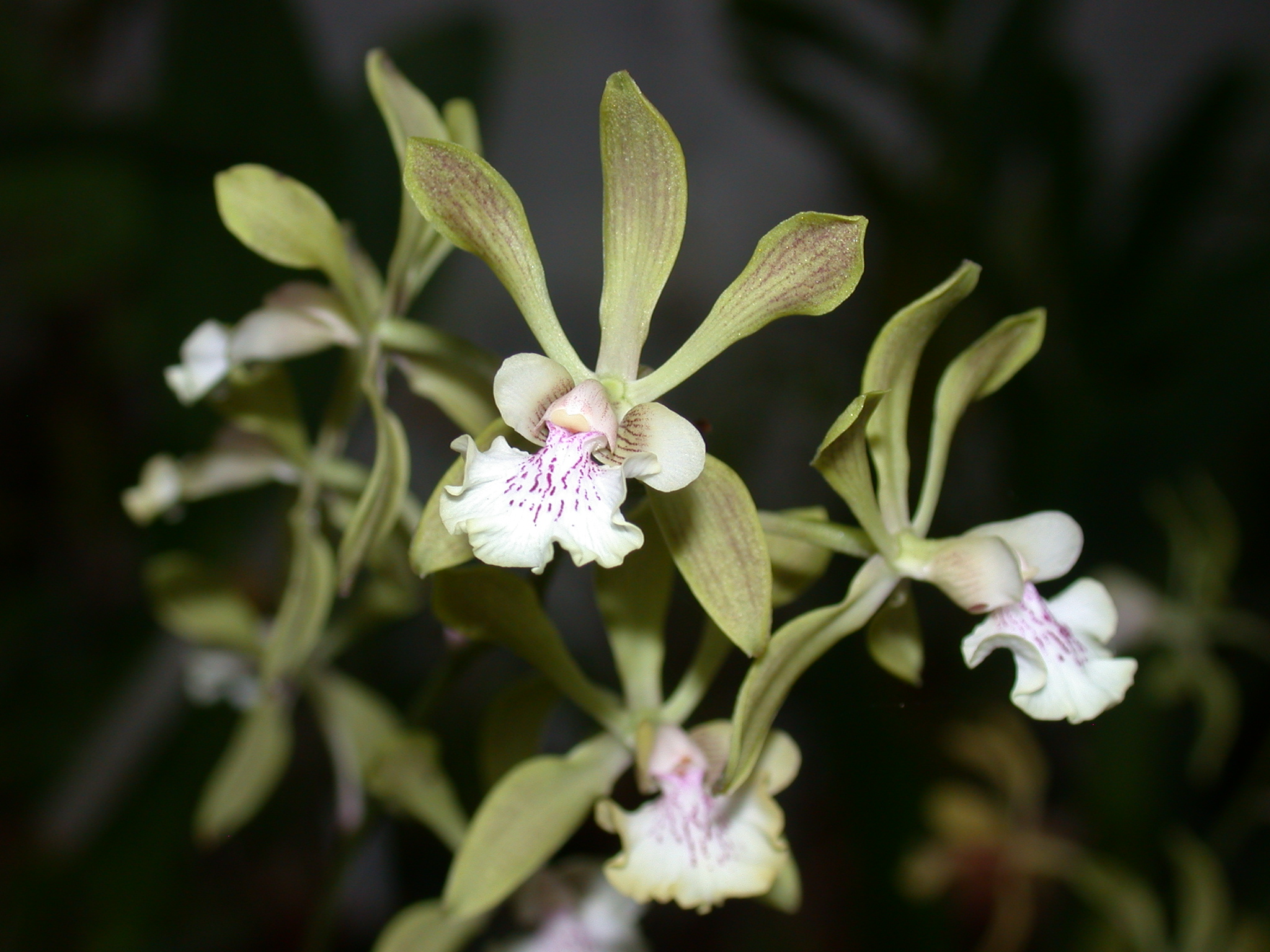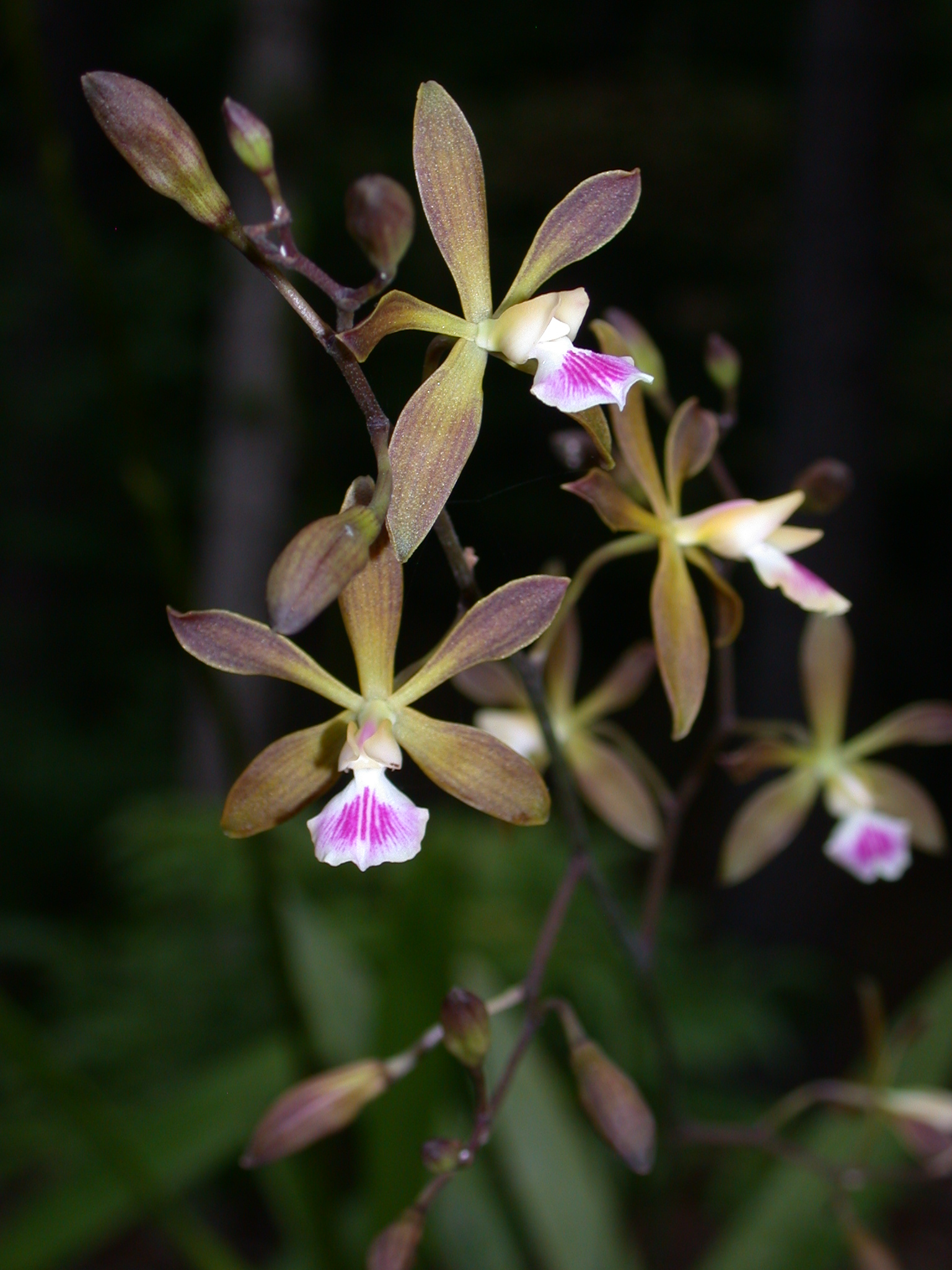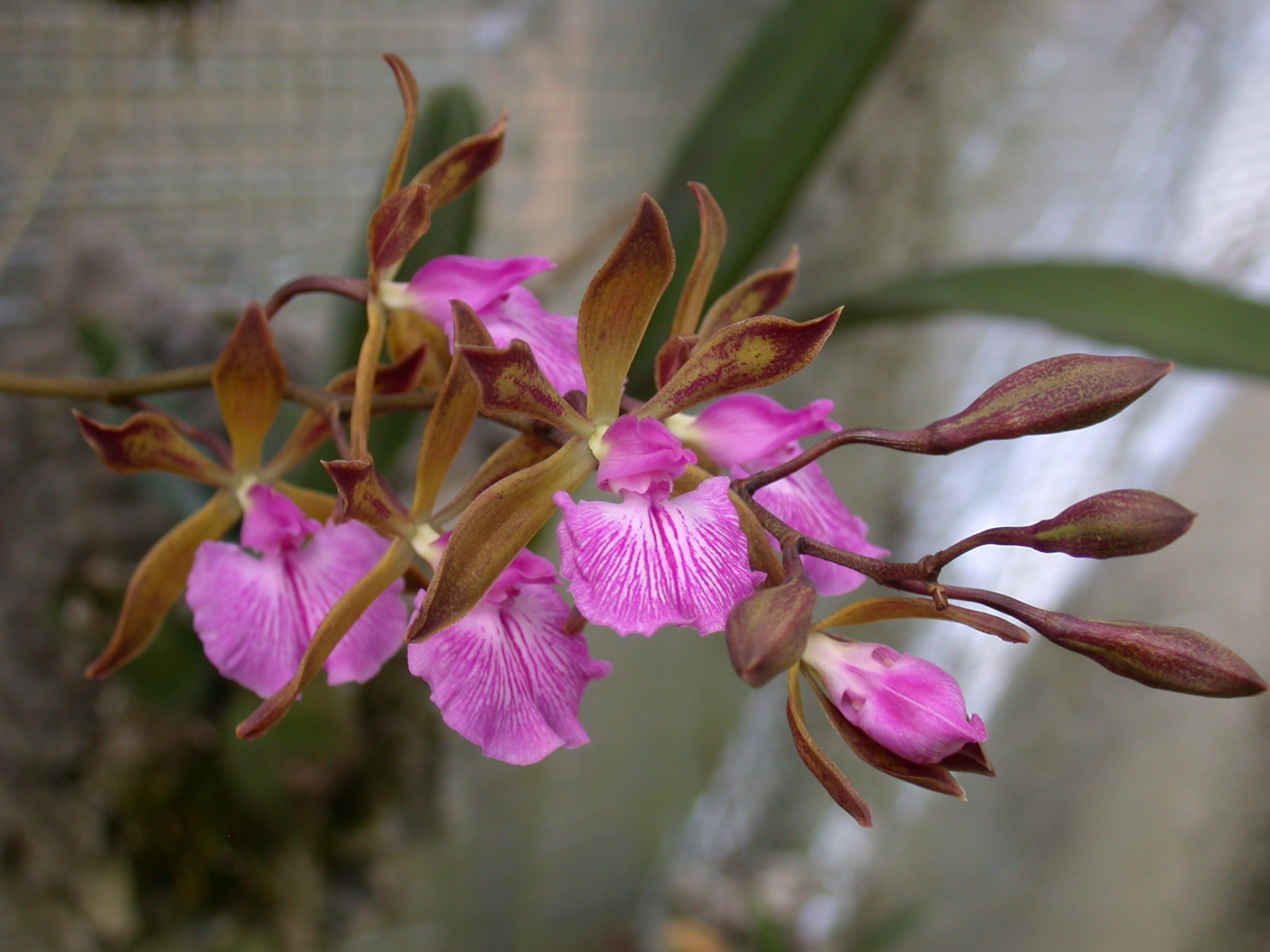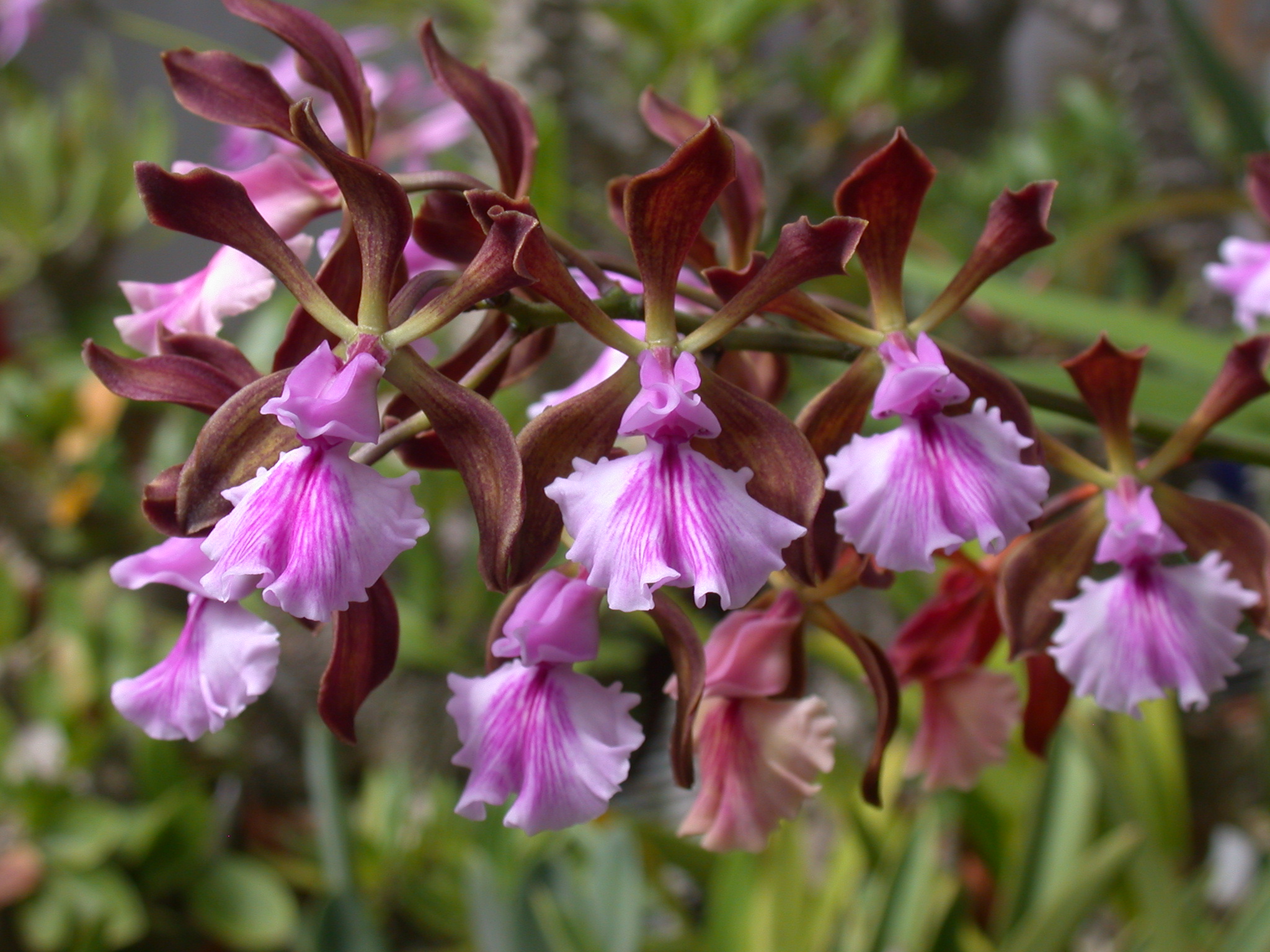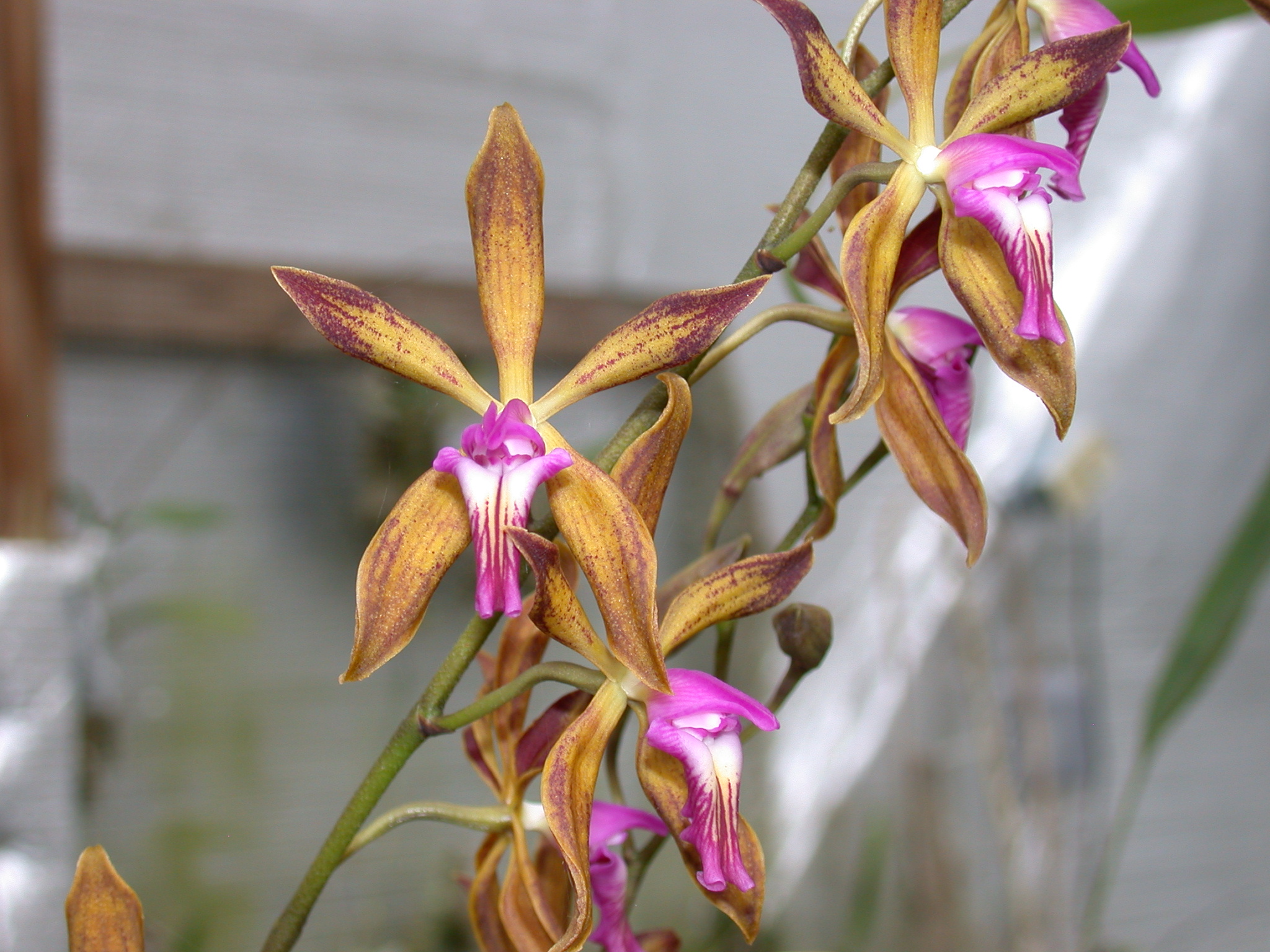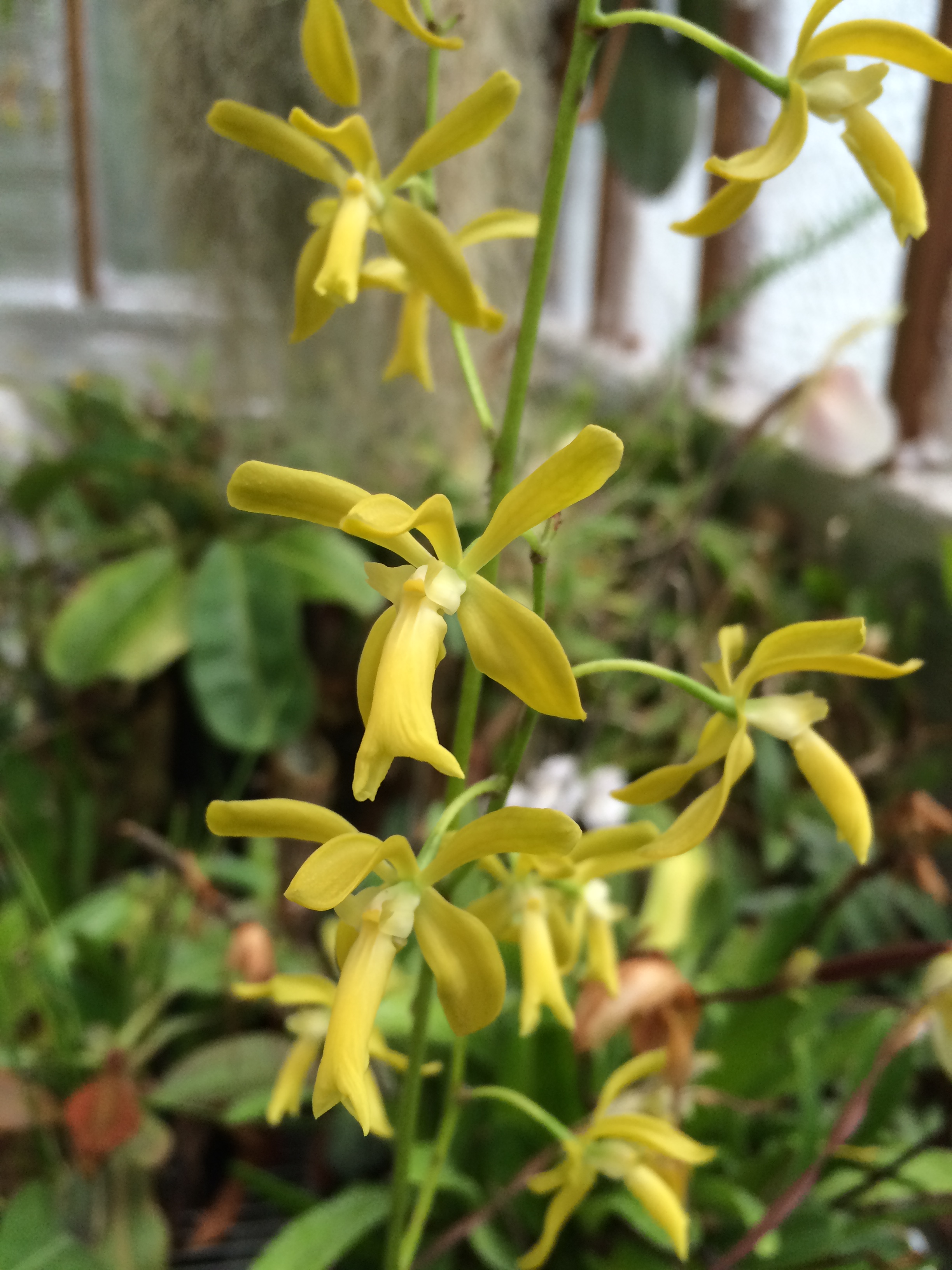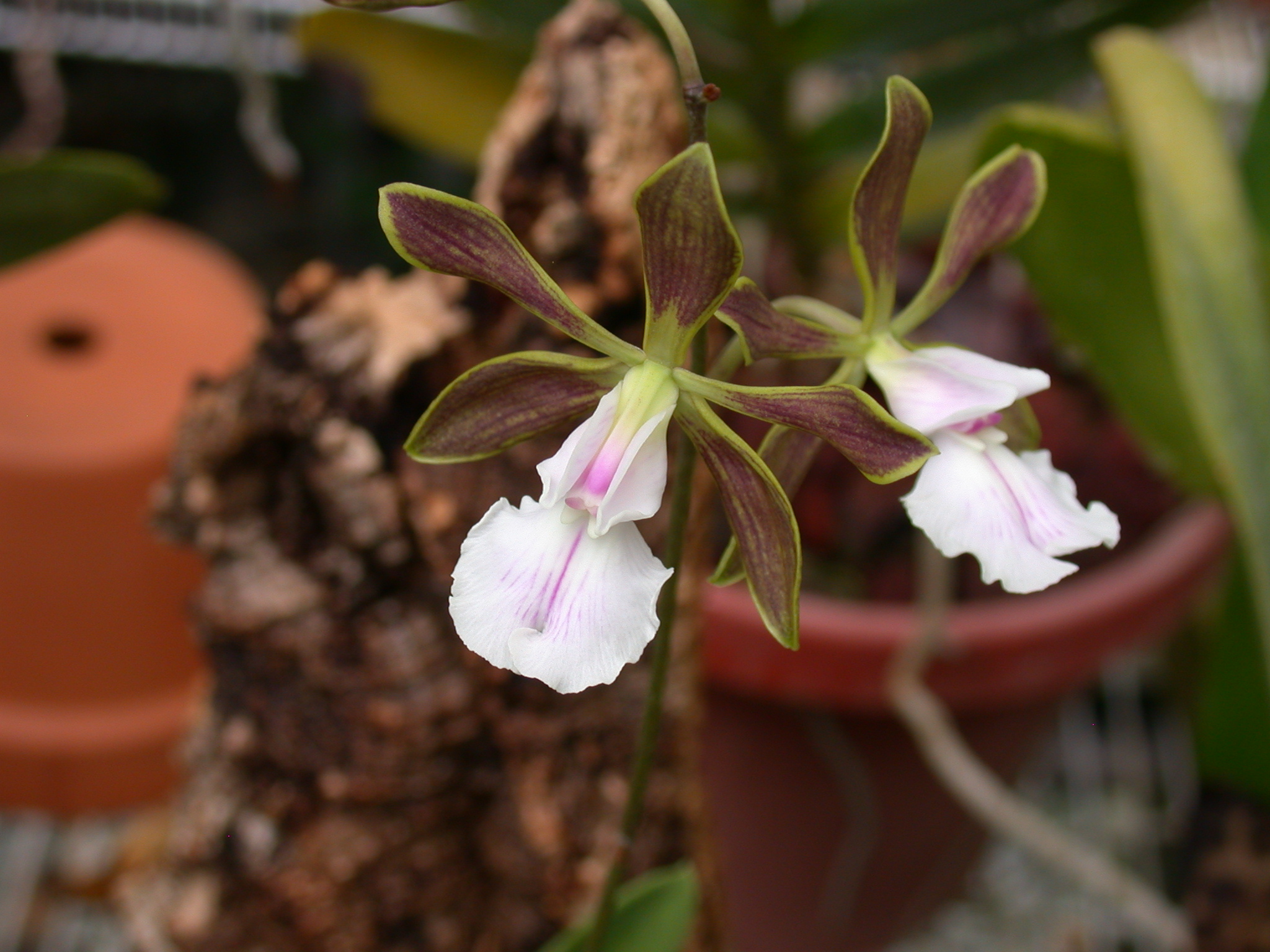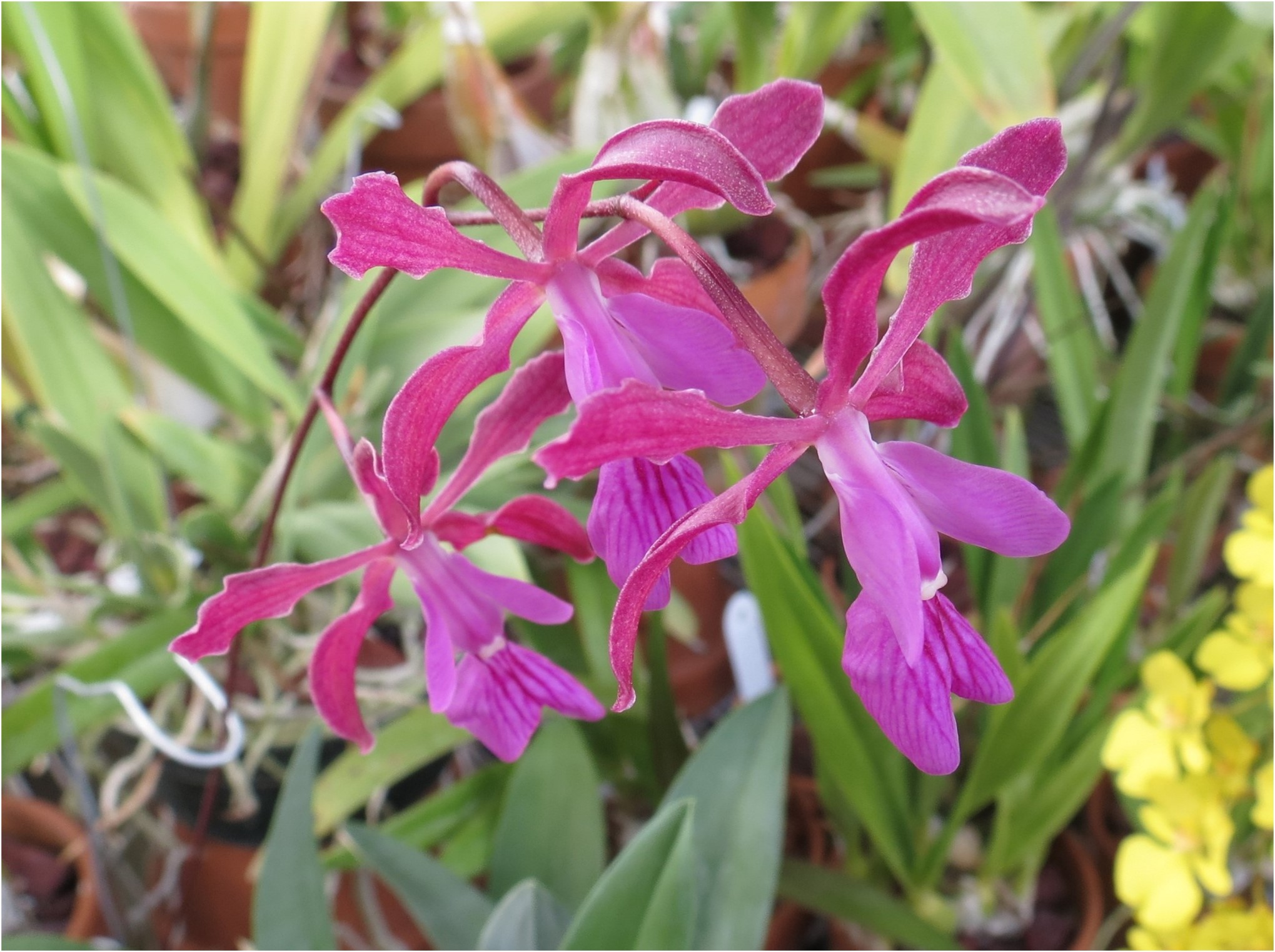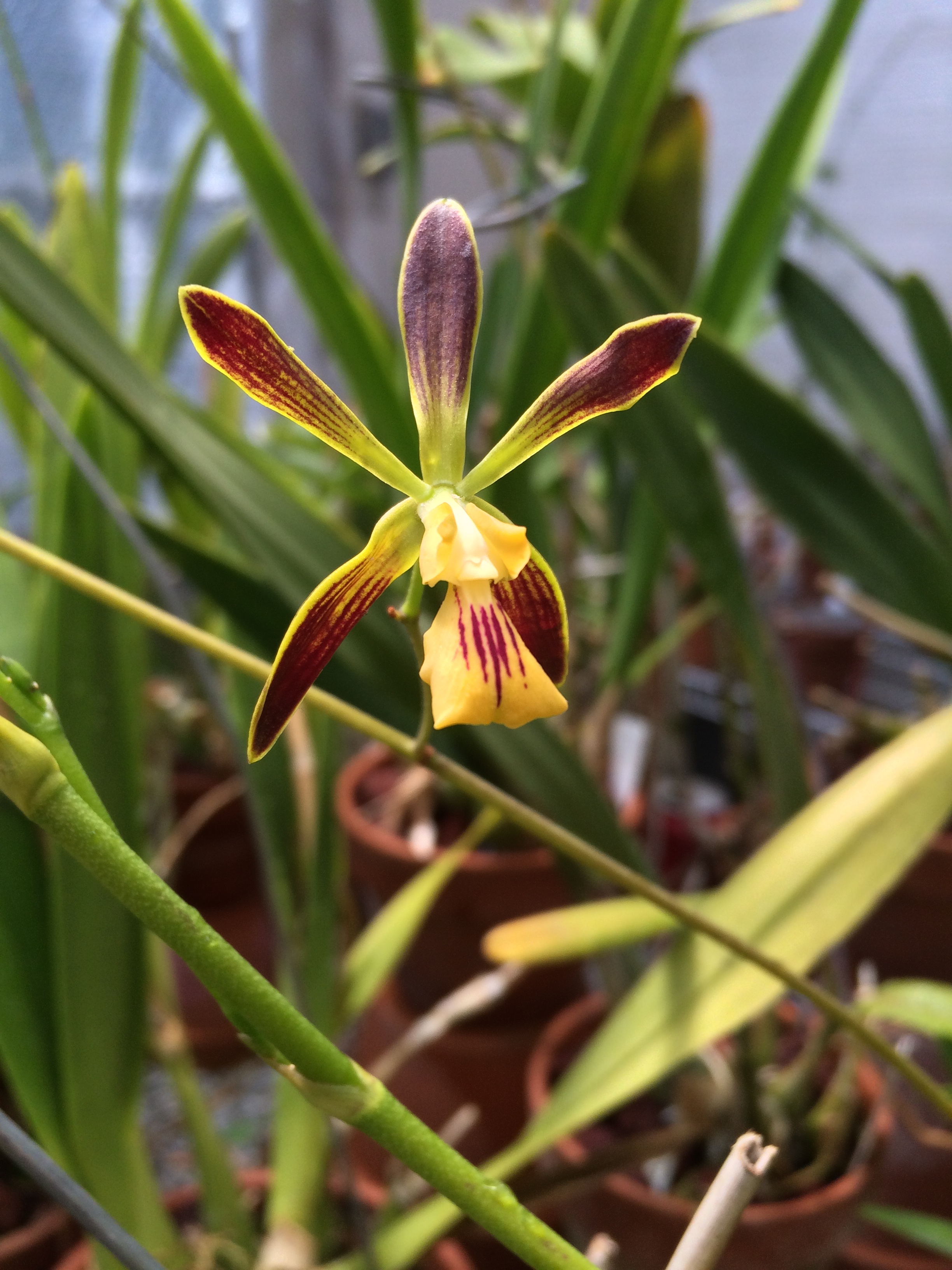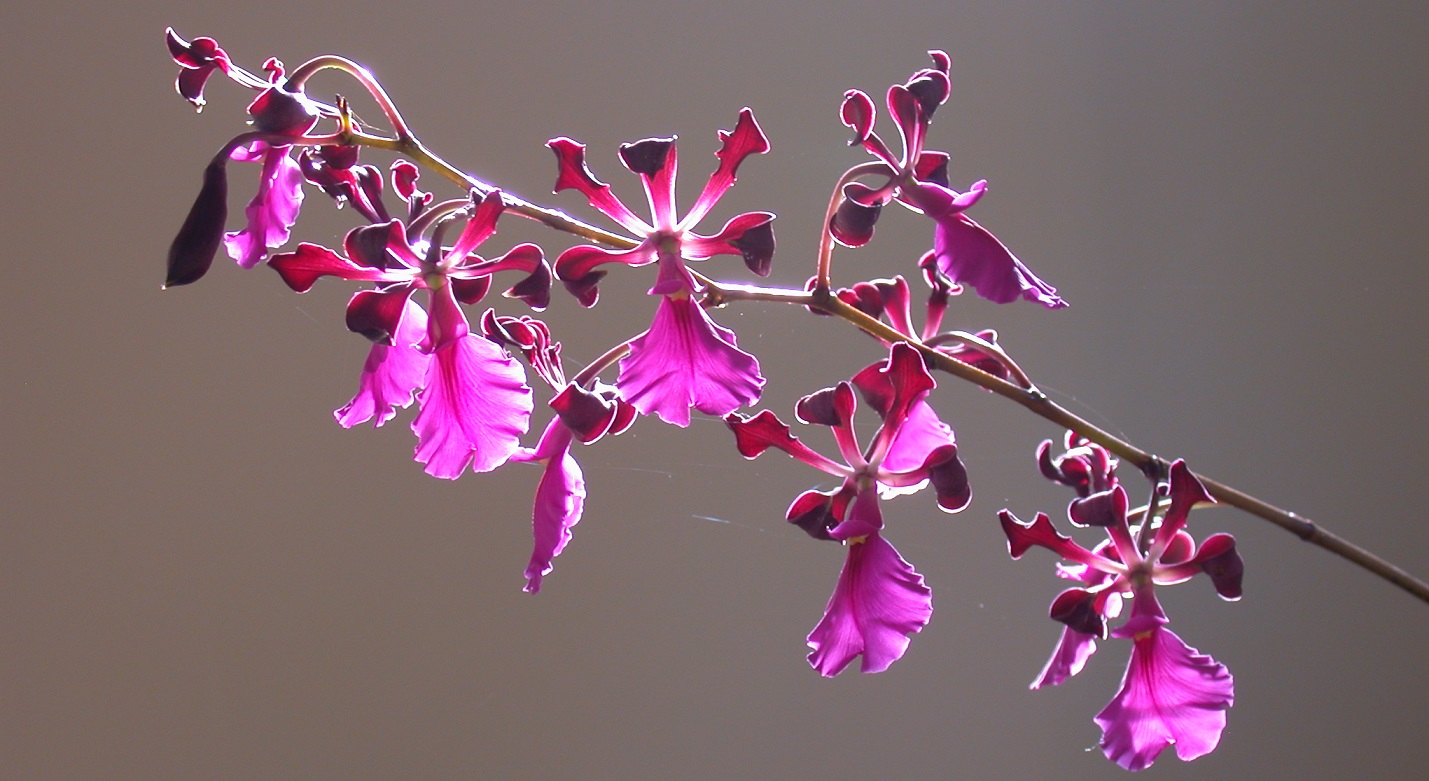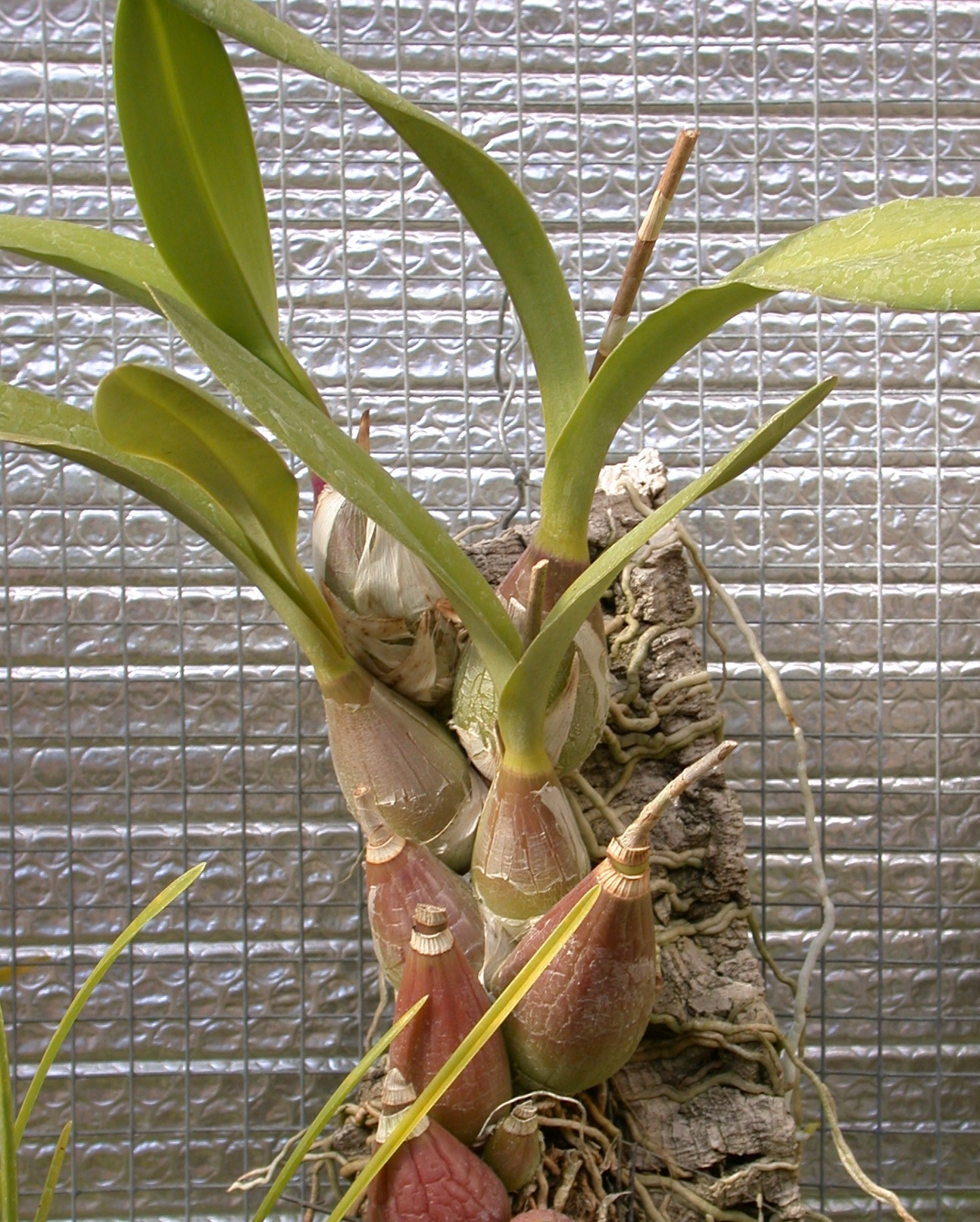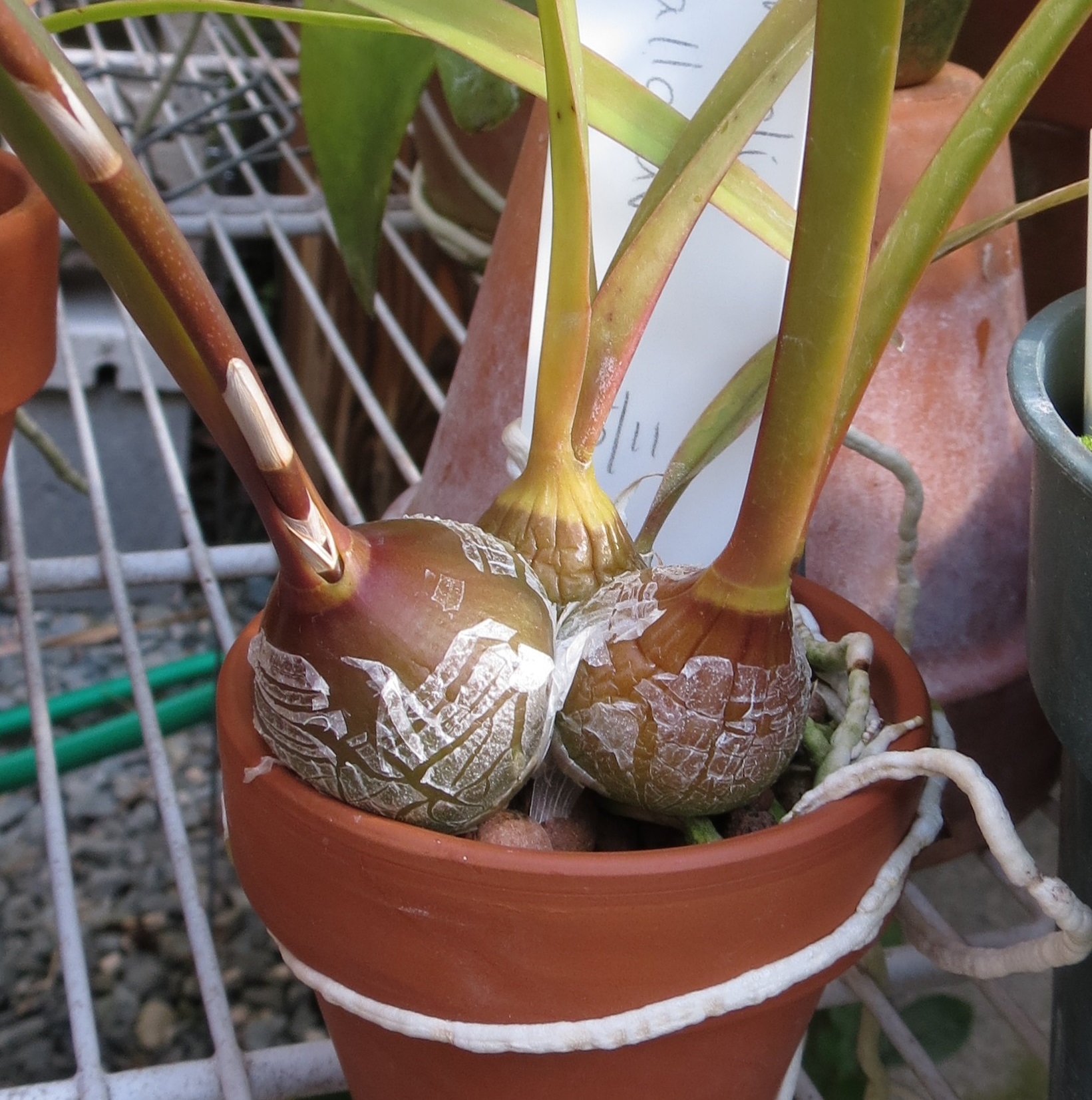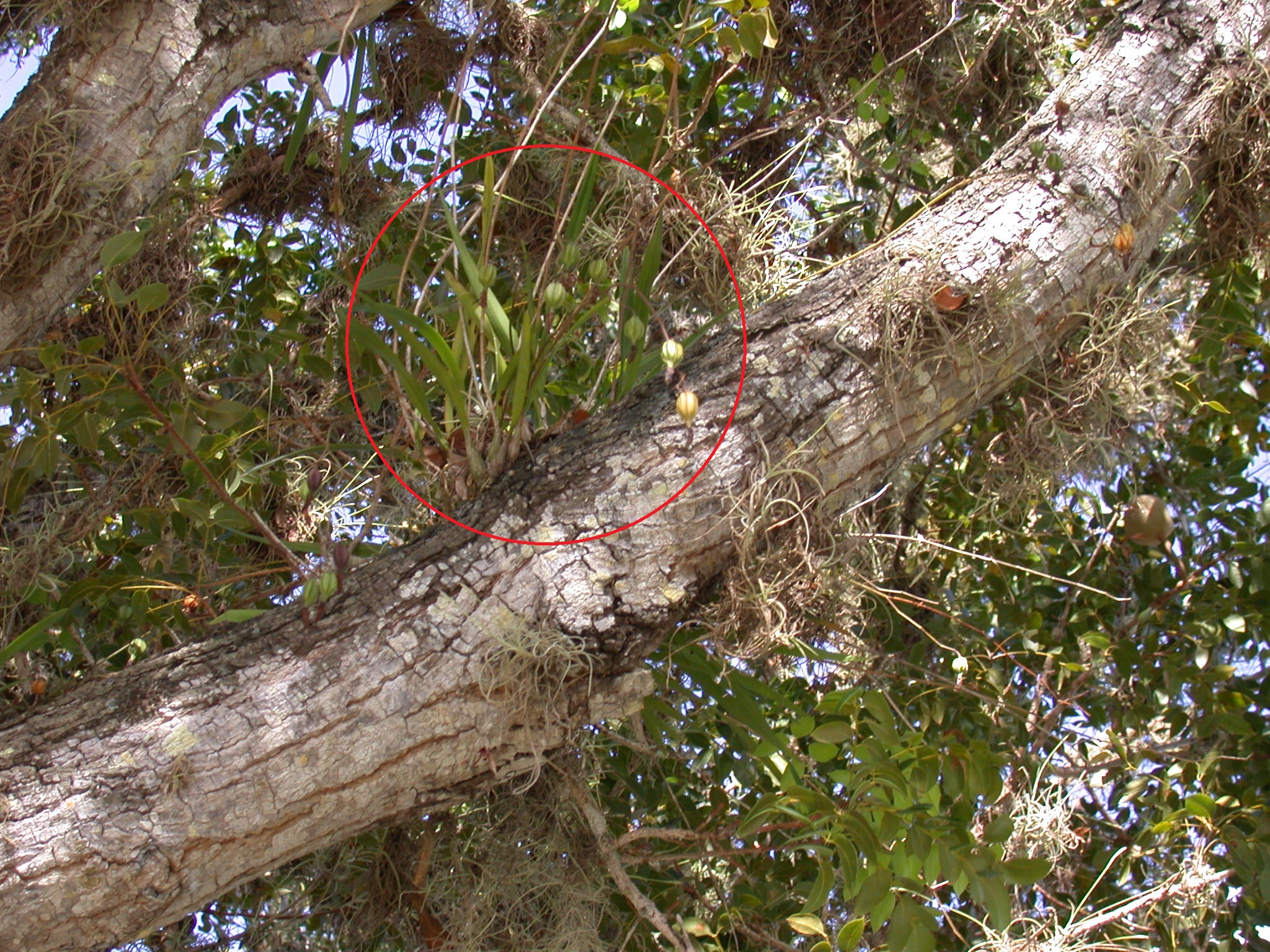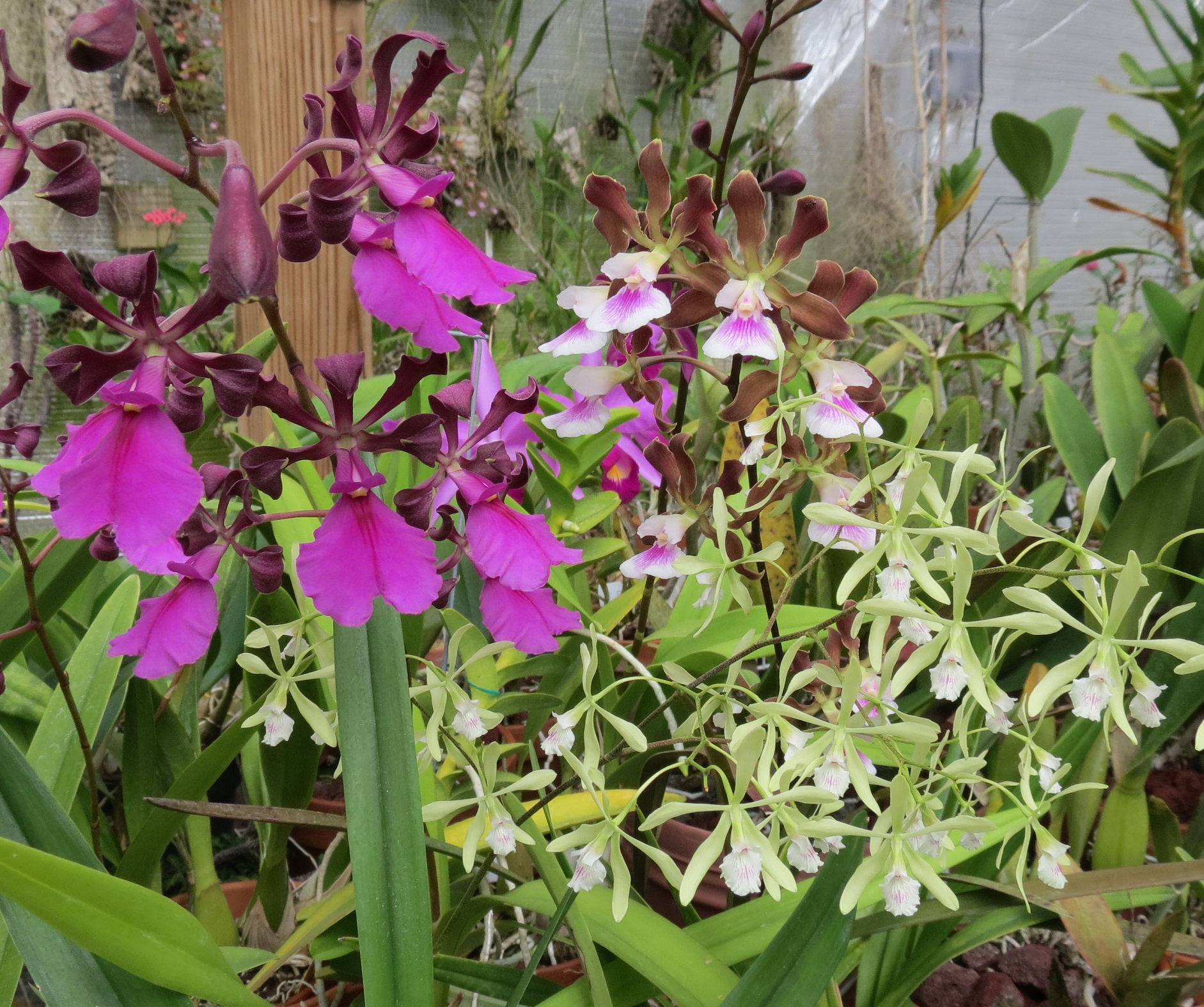(Start at The Genus Encyclia–Part 1)
The range of Encyclia extends throughout South America, from Colombia south to Argentina. As might be expected, given the size of the area, there are more South American Encyclia species than Central American and Caribbean species combined. The greatest diversity of Encyclia in South America is found in Brazil, particularly in the area of the Brazilian shield, the ancient geologically stable region south and east of the Amazon Basin. Given the diversity of closely related species from this region, I have been unable to positively identify a number of the Brazilian species that I have grown. As with the other posts in this series, the species illustrated here represent only a tiny proportion of the diversity in nature, but they include the plants most likely to be seen in cultivation.
Encyclia profusa
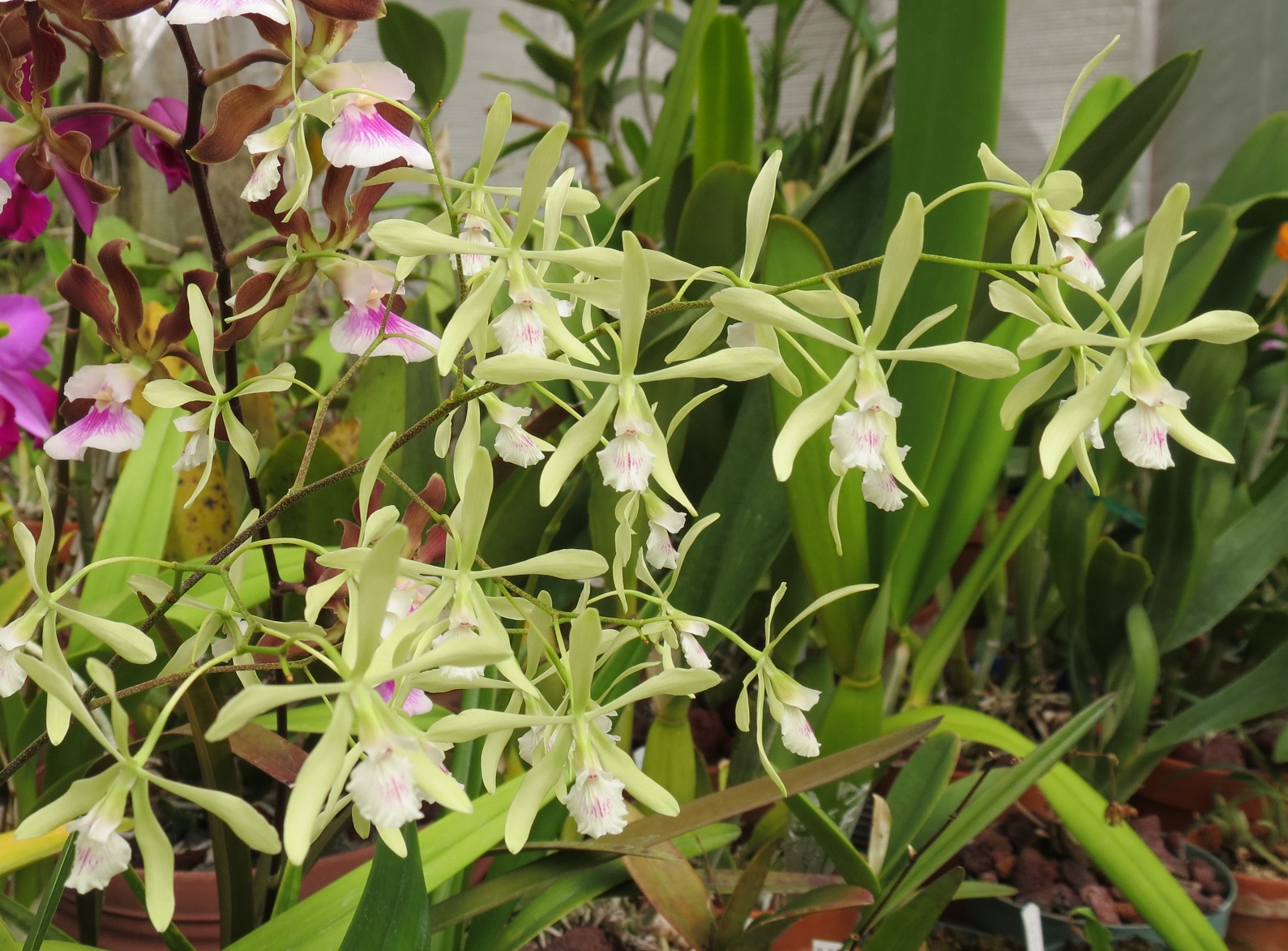
This species is from Colombia. It isn’t colorful, but a well grown plant produces a cloud of flowers that impress by their sheer numbers.
Encyclia randii
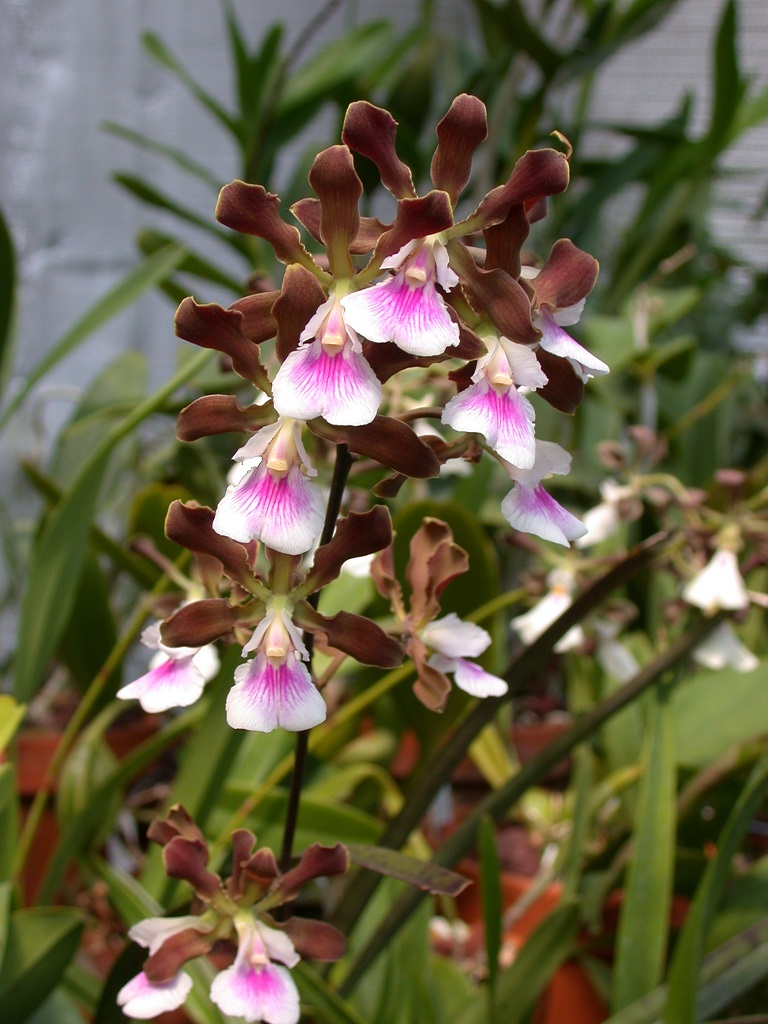
Encyclia randii is definitely one of the most beautiful Encyclia species, and it also has one of the largest flowers in the genus, competing in size with E. cordigera. Orchid growers sometimes confuse E. randii with the white-lipped form of E. cordigera, but vegetatively the two species look quite different. E. randii has almost spherical pseudobulbs and narrow, rigid foliage, while E. cordigera has egg-shaped pseudobulbs and broader, strap-like leaves. E. randii grows as a lowland species in the Amazon rain forest, and consequently is much less drought tolerant than many Encyclia species. Compared to Caribbean and Central American species, E. randii should be given a little more shade and considerably more water. The mix should still be open and airy, though. Do not allow the plant to sit in saturated potting media for long periods or the roots will rot.
Encyclia dichroma
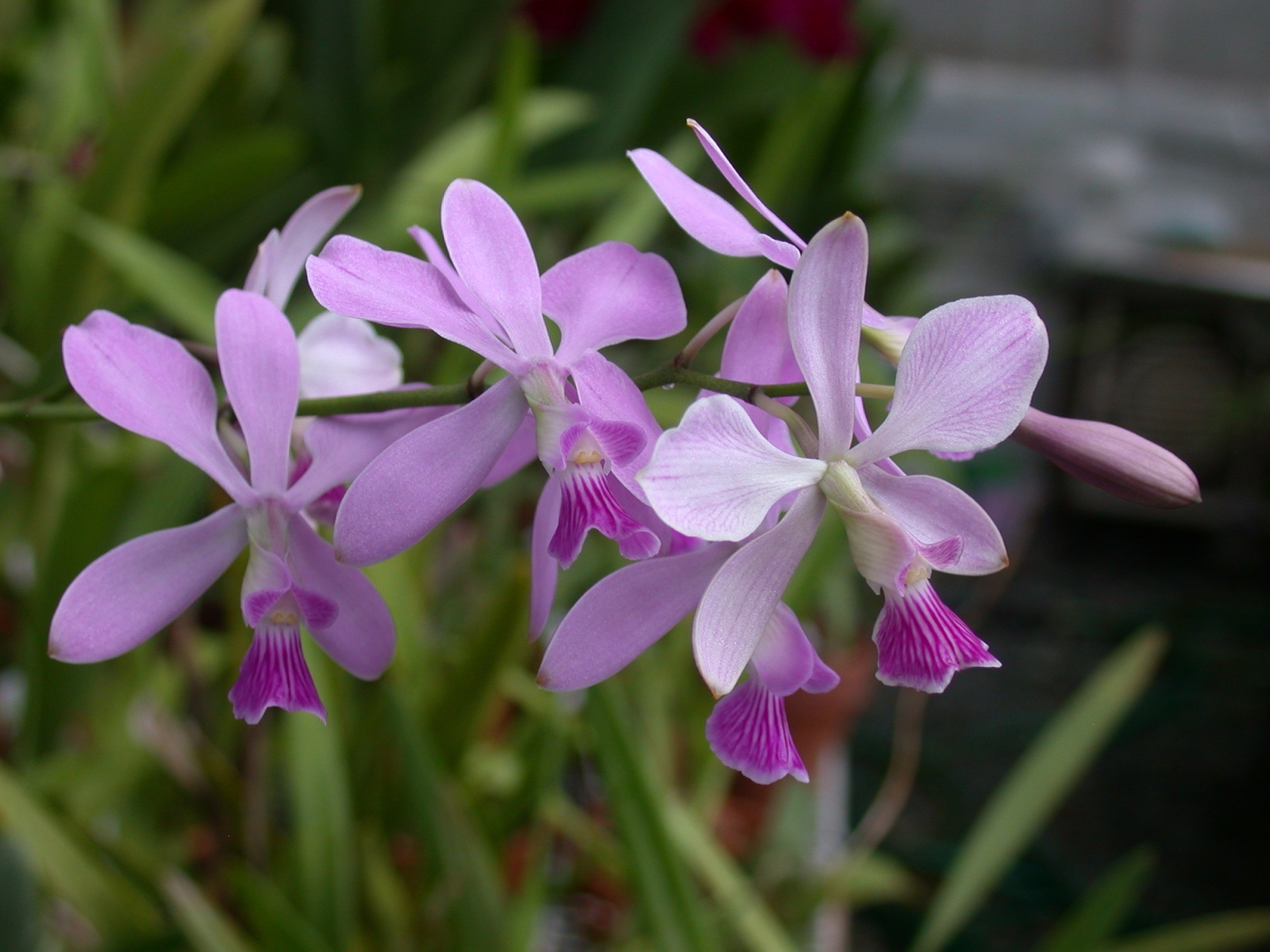
This beautiful species grows on rocky outcrops under arid conditions in Bahia state. Consequently, it should be given much brighter, drier growing conditions than the previous species. I have had success growing the plants in terracotta pots with pure scoria (red lava rock) or aliflor. Treat it more-or-less like a cactus or succulent, and you won’t go too far wrong. The species name presumably refers to the two-shades of purple on the flowers.
Encyclia fowliei
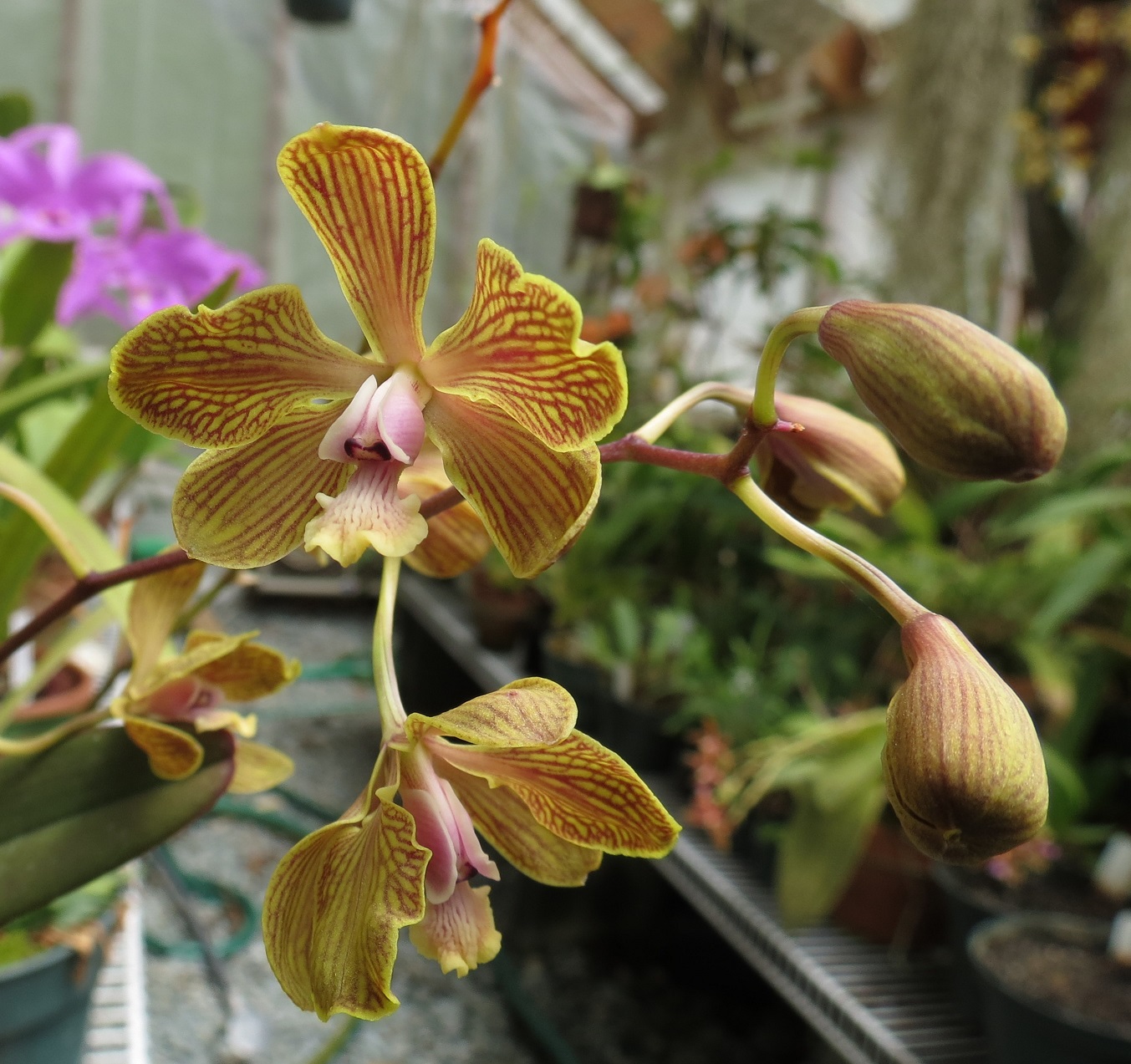
This is probably my favorite of the Brazilian species, and luckily it has proven to be resistant to boisduval scale. It is a fairly small species, but the flowers are large for the size of the plant. The reticulated pattern on the sepals and petals is unique.
Encyclia gallopavina
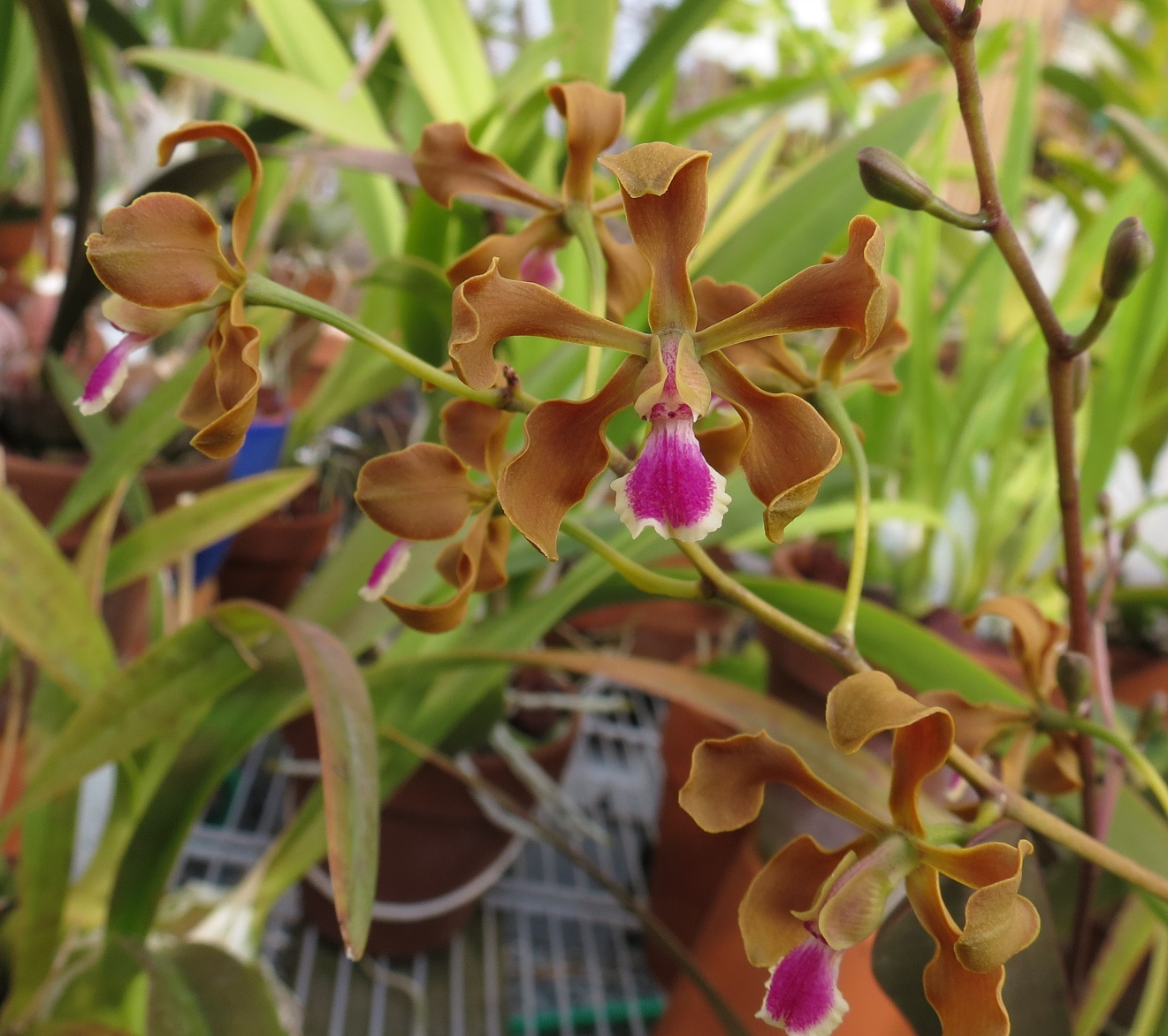
This miniature species is quite similar to E. fowliei vegetatively, and the two species may be closely related. Sadly, it did not share the resistance to boisduval scale, and despite spraying I eventually lost my plant.
Encyclia species
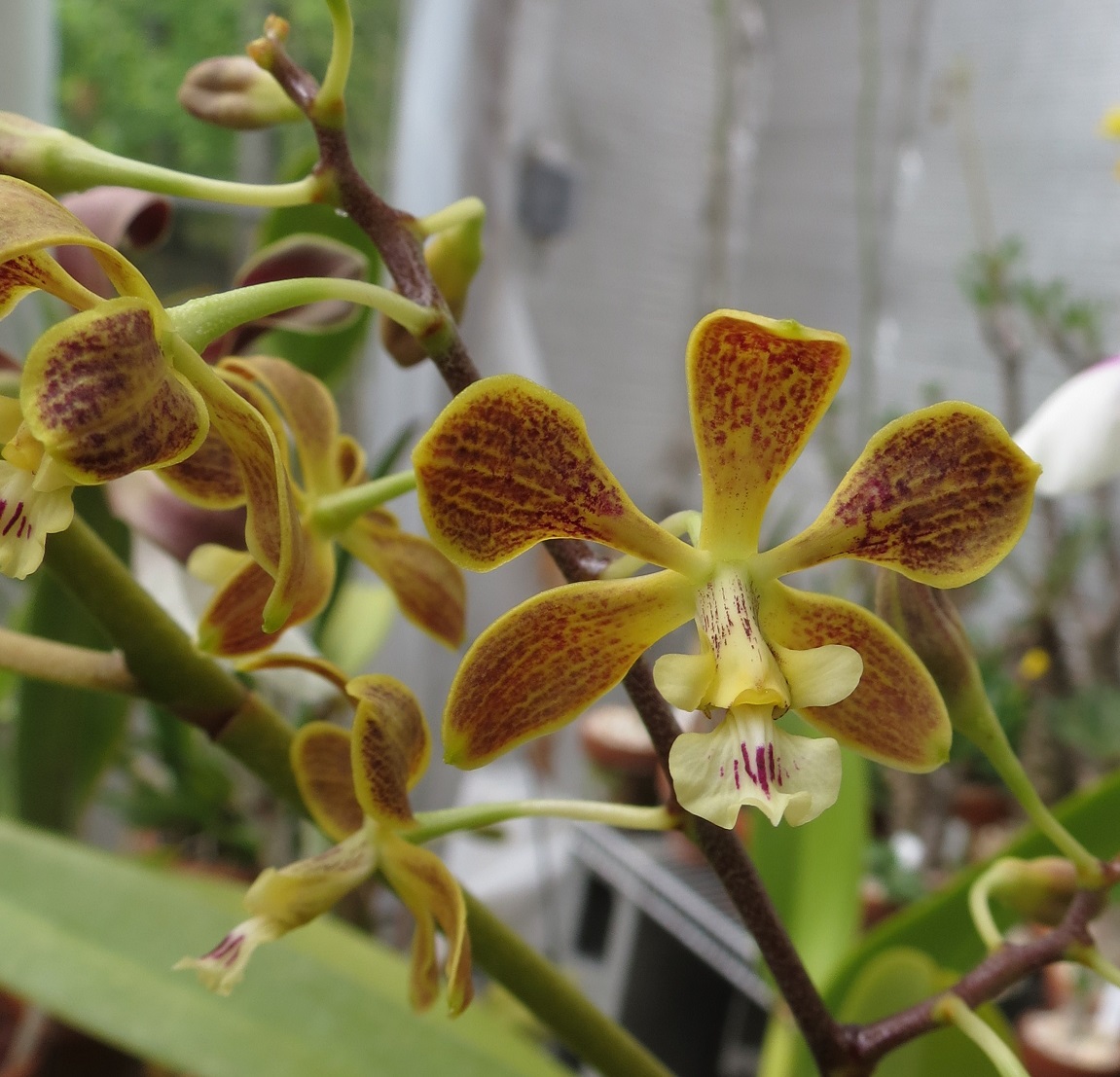
This plant is a mystery. It was originally sold by a nursery in Hawaii as “E. fowliei” but it is clearly not that species or anything like it. I suspect it might be Encyclia patens, but I am far from certain.
Encyclia advena
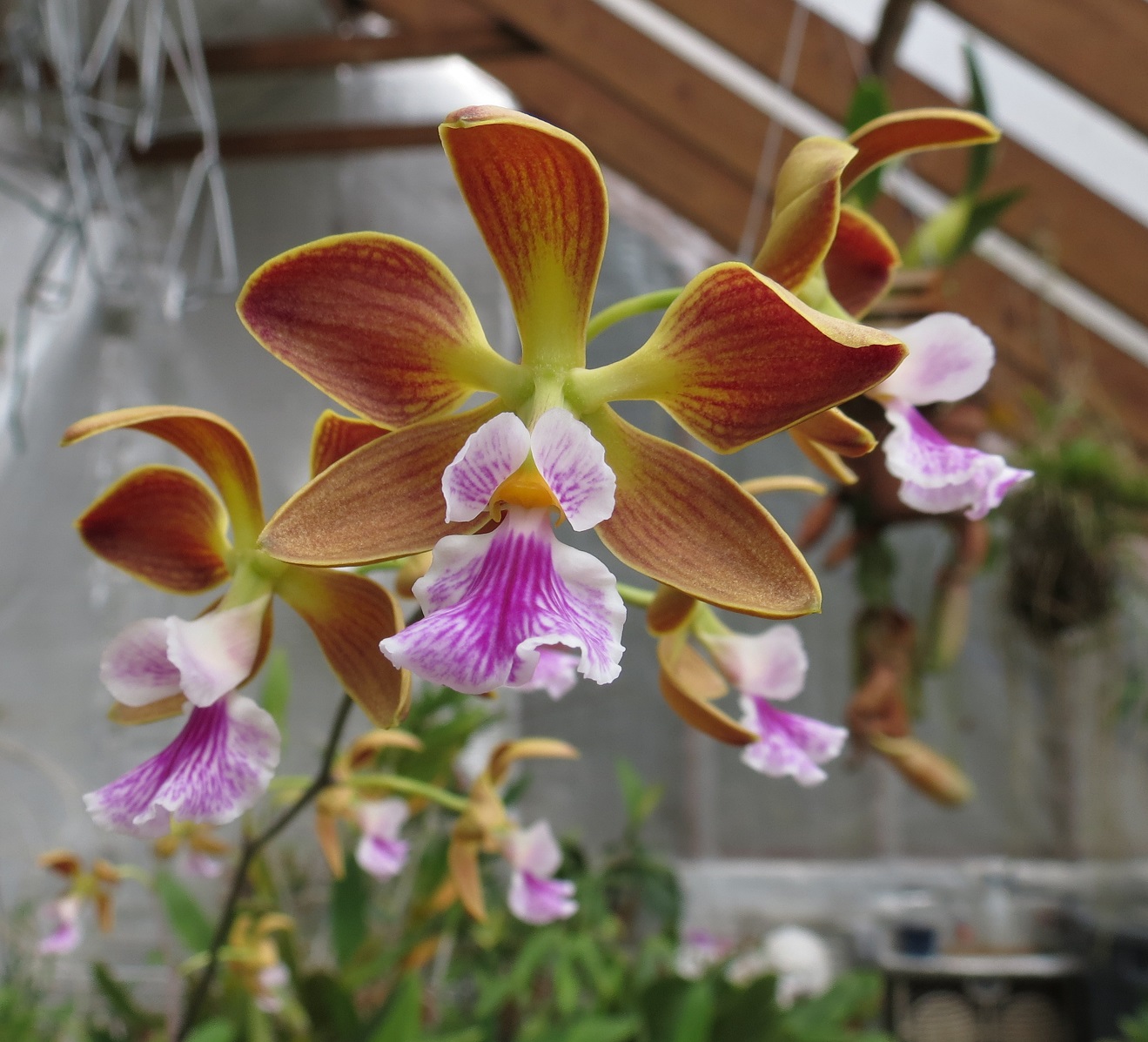
The nomenclature of this large and beautiful Brazilian species is somewhat confused in the literature, with E. megalantha and E. osmantha variously treated as separate species or synonyms. I’m going to stick with the name that came attached to this plant.
Encyclia osmantha? E. alboxanthina?
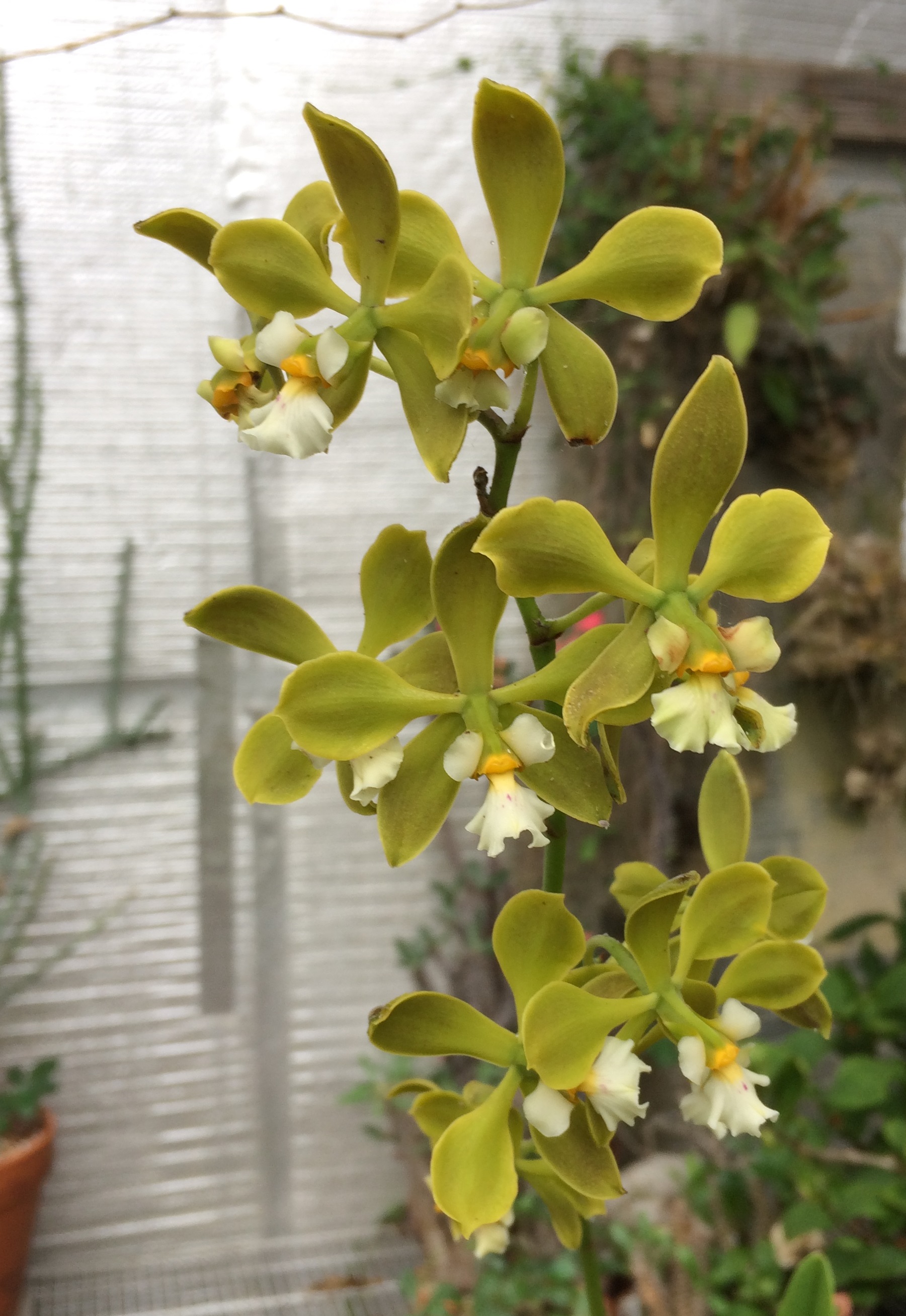
See above re: nomenclatural confusion. This plant came labeled as Encyclia osmantha, but the flowers don’t look much like the E. osmantha illustrated by Withner (2000)–in particular, it lacks the scalloped edges to the labellum side lobes. In fact, the flowers look a lot more like E. alboxanthina illustrated by Fowlie and Duveen (1992) and Campacchi (2003), and the foliage is also consistent with that species. It has a very xerophytic appearance, with rigid leaves that lack an abscission layer and remain stuck to the pseudobulbs after they have dried out. This plant has resisted boisduval scale.
Encyclia alboxanthina?
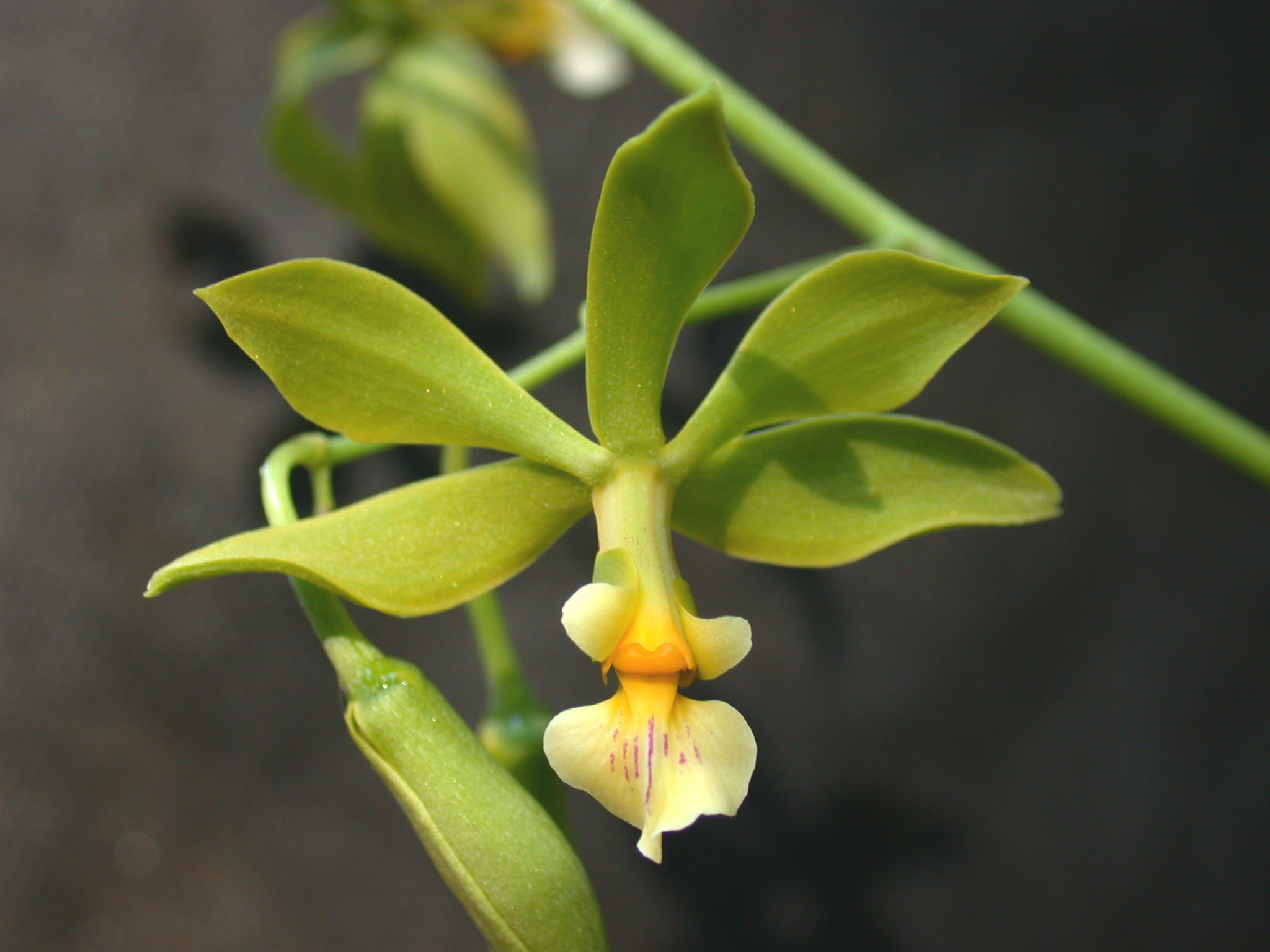
This plant came labeled as E. alboxanthina, but its petals and labellum look quite different from the previous plant. So, yeah, I give up.
References and further reading
Campacci, MA (2003) Encyclia. Coletânea de Orquídeas Brasileiras 1: 1−32.
Fowlie, JA and Duveen, D (1992) A contribution to an understanding of the genus Encyclia as it occurs in the Brazilian Shield and its river tributaries. Orchid Digest 56: 171-206.
Withner, CL (2000). The Cattleyas and their Relatives: Volume VI. The South American Encyclia species. Timber Press, Portland, Oregon.
Up next: a few hybrids

